
Support our hydrofoil educational content for free when you purchase through links on our site. Learn more

[2023] Hydrofoil Yacht: The Ultimate Guide to Sailing on Foils
- November 1, 2023
- Hydrofoil Basics
Quick Answer: A hydrofoil yacht is a sailboat equipped with wing-like foils that lift the hull out of the water as it gains speed. This reduces drag, increases speed, and provides a smoother ride. Hydrofoil yachts can be retrofitted on both monohull and multihull sailboats, with different types of foils used for stability and control.
Welcome to Hydrofoiling™, where we bring you all the latest and greatest information about hydrofoil boarding. In this comprehensive guide, we’ll dive into the world of hydrofoil yachts, exploring their history, configurations, classes, and more. Whether you’re a seasoned sailor or a curious beginner, this article will provide you with expert advice and insights into the exciting world of hydrofoil yachts.
Table of Contents
Quick answer, quick tips and facts, background: the evolution of hydrofoil yachts, types of hydrofoil yachts, hydrofoil classes: from moths to ac75, hydrofoil yacht brands and models, advantages and disadvantages of hydrofoil yachts.
- Recommended Links
- Reference Links
A hydrofoil yacht is a sailboat equipped with wing-like foils that lift the hull out of the water as it gains speed. This lifting action reduces the wetted area of the hull, minimizing drag and allowing the yacht to achieve higher speeds. Hydrofoil yachts can be retrofitted on both monohull and multihull sailboats, with different types of foils used for stability and control.
Shopping Links: Check out hydrofoil yacht products on Amazon | Shop hydrofoil yacht on Walmart | Etsy hydrofoil yacht products
- Hydrofoil yachts use foils to lift the hull out of the water, reducing drag and increasing speed.
- Different types of foils, such as T foils, C foils, S foils, and L foils, are used for stability and control.
- Hydrofoil yachts can be retrofitted on both monohull and multihull sailboats.
- The International Moth class is one of the most widespread uses of hydrofoils in sailboats.
- Hydrofoil yachts can achieve impressive speeds, with some reaching over 50 knots.
Hydrofoil technology has been around for over a century, with the first patent for a hydrofoil boat filed in 1898 by Italian engineer Enrico Forlanini. Since then, hydrofoil yachts have undergone significant advancements, transforming the sailing experience and pushing the boundaries of speed and performance.
The concept behind hydrofoil yachts is simple yet ingenious. By using wing-like foils mounted under the hull, these yachts can lift themselves out of the water as they gain speed. This lifting action reduces the wetted area of the hull, minimizing drag and allowing the yacht to glide effortlessly through the water.
Hydrofoil yachts come in various configurations, each designed to optimize performance and stability. Let’s explore some of the most common types of hydrofoil yachts:
Monohull Hydrofoil Yachts : Monohull hydrofoil yachts feature a single hull and employ a “ladder” arrangement of hydrofoils. These hydrofoils typically have a dihedral angle of around 50 degrees and are complemented by a stabilizing rudder foil. This configuration provides stability and control, allowing the yacht to sail smoothly on foils.
Multihull Hydrofoil Yachts : Multihull hydrofoil yachts, such as catamarans and trimarans, offer increased stability and performance. These yachts use wider planforms, allowing for greater lift and control. Some multihulls utilize three foils, with two main forward foils providing lift and a horizontal foil on the rudder for additional control.
Hydrofoil Catamarans : Hydrofoil catamarans, also known as foilcats, combine the stability of a catamaran with the speed and efficiency of hydrofoils. These yachts can achieve impressive speeds while maintaining excellent stability, making them popular choices for racing and recreational sailing.
Hydrofoil technology has found its way into various sailing classes, revolutionizing the way we sail. Let’s take a closer look at some of the notable hydrofoil classes:
International Moth : The International Moth class is one of the most widespread uses of hydrofoils in sailboats. These single-handed dinghies feature foiling capabilities, allowing sailors to achieve incredible speeds and maneuverability. The class has seen rapid growth since 2001, with carbon fiber foils and advanced design techniques pushing the boundaries of performance.
Waszp : The Waszp class is similar to the International Moth class but utilizes aluminum foils instead of carbon fiber. This makes the Waszp more accessible to a wider range of sailors while still providing the exhilaration of foiling.
AC75 : The AC75 is a foiling monohull sailboat class used in the 2021 America’s Cup. These impressive yachts can reach speeds of up to 50 knots, showcasing the incredible potential of hydrofoil technology in the world of competitive sailing.
IQFoil : The IQFoil windsurfer class was selected by World Sailing for the 2024 Summer Olympics. These windsurfers feature hydrofoils, allowing athletes to glide above the water and achieve impressive speeds.
IMOCA 60 : Originally designed as non-foiling offshore racers, the IMOCA 60 class has embraced hydrofoil technology. These yachts now feature S-shaped daggerboard foils, providing partial foiling capabilities and enhancing performance in various conditions.
F50 : The F50 sailboat class is used in the SailGP series and is the first sailboat class to break the 50-knot barrier during a race, with a top speed of 52.2 knots. These high-performance catamarans showcase the incredible speed and agility that hydrofoil technology can offer.
Several brands have embraced hydrofoil technology, offering a range of hydrofoil yachts to cater to different sailing preferences. Here are some notable hydrofoil yacht brands and models:
Gunboat : Gunboat is a renowned brand in the world of luxury hydrofoil yachts. Their models, such as the Gunboat 68 and Gunboat 72, combine performance, comfort, and elegance, providing an exceptional sailing experience.
GC32 : The GC32 is a hydrofoil catamaran designed for high-performance racing. This foiling catamaran offers thrilling speeds and precise control, making it a favorite among competitive sailors.
AC72 and AC45f/AC50 : These hydrofoil catamarans were used in the America’s Cup, showcasing the cutting-edge technology and innovation in the world of hydrofoil yachts. These yachts pushed the boundaries of speed and performance, captivating sailing enthusiasts worldwide.
Nacra 17 and Nacra F20 : Nacra is a well-known brand in the world of multihull sailing, and their Nacra 17 and Nacra F20 models feature hydrofoil capabilities. These yachts offer a perfect balance of speed, stability, and maneuverability, making them popular choices for recreational and competitive sailing.
Hydrofoil yachts offer a range of advantages that make them appealing to sailors seeking speed, performance, and an exhilarating sailing experience. However, they also come with some drawbacks. Let’s explore the pros and cons of hydrofoil yachts:
Advantages:
Increased Speed : Hydrofoil yachts can achieve impressive speeds, thanks to reduced drag and increased lift. This allows sailors to cover more distance in less time, making hydrofoil yachts ideal for racing or simply enjoying the thrill of speed on the water.
Smooth Ride : By lifting the hull out of the water, hydrofoil yachts provide a smoother and more comfortable sailing experience. The reduced contact with the water minimizes the impact of waves and chop, resulting in a smoother ride even in rough conditions.
Improved Efficiency : Hydrofoil yachts are more efficient than traditional sailboats, thanks to reduced drag and improved lift. This increased efficiency translates to better performance and reduced energy consumption, making hydrofoil yachts an environmentally friendly choice.
Disadvantages:
Complex Design : Hydrofoil yachts require a more complex design compared to traditional sailboats. The addition of foils and the associated control systems can increase the complexity of the yacht, requiring more maintenance and potentially higher costs.
Learning Curve : Sailing a hydrofoil yacht requires a certain level of skill and experience. The handling and control of a hydrofoil yacht can be more challenging compared to traditional sailboats, requiring sailors to adapt to the unique characteristics of foiling.
Higher Costs : Hydrofoil yachts, especially high-performance models, can come with a higher price tag compared to traditional sailboats. The advanced technology, materials, and design required for hydrofoil yachts contribute to their higher cost.
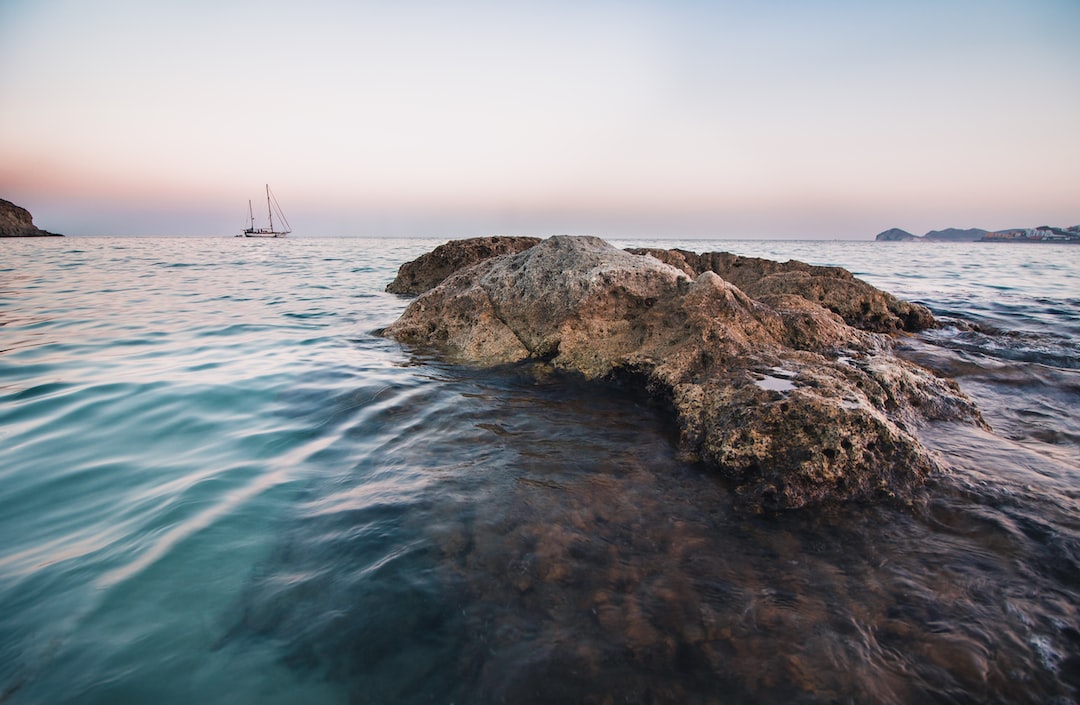
How fast is the hydrofoil racing yacht?
Hydrofoil racing yachts can achieve impressive speeds, with some models reaching over 50 knots (57.5 mph or 92.6 km/h). The F50 sailboat class, used in the SailGP series, holds the record for the fastest sailboat class, with a top speed of 52.2 knots (60 mph or 97 km/h).
What does a hydrofoil do to a boat?
A hydrofoil lifts the hull of a boat out of the water as it gains speed. This reduces the wetted area of the hull, minimizing drag and allowing the boat to achieve higher speeds. The lifting action of the hydrofoil also provides a smoother ride by reducing the impact of waves and chop.
Read more about “… Hydrofoil Catamaran: The Ultimate Guide to Foiling on Water”
How fast do hydrofoil boats go?
Hydrofoil boats can reach impressive speeds, depending on their design and purpose. Racing hydrofoil yachts can achieve speeds over 50 knots (57.5 mph or 92.6 km/h), while recreational hydrofoil boats can reach speeds of 20-30 knots (23-34.5 mph or 37-55.5 km/h) or more.
Why don’t boats use hydrofoils?
While hydrofoils offer significant advantages in terms of speed and efficiency, they also come with certain limitations. The complex design and higher costs associated with hydrofoils can be prohibitive for some boat owners. Additionally, the handling and control of hydrofoil boats require a certain level of skill and experience, making them less accessible to novice sailors.
Read more about “… Why do boats not use hydrofoils?”
Hydrofoil yachts have revolutionized the sailing experience, offering increased speed, improved efficiency, and a smoother ride. Whether you’re a competitive sailor looking for the thrill of high-speed racing or a recreational sailor seeking a more exhilarating sailing experience, hydrofoil yachts provide an exciting and innovative option.
Recommended Links:
- Hydrofoil History
- Advanced Hydrofoiling Techniques
- Hydrofoil Equipment Reviews
- How Do Hydrofoils Work on Boats? 2023
Reference Links:
- Sailing Hydrofoil – Wikipedia
- Gunboat Official Website
- Nacra Official Website
- SailGP Official Website
- America’s Cup Official Website
Now that you have a comprehensive understanding of hydrofoil yachts, it’s time to set sail and experience the thrill of foiling firsthand. Whether you’re racing on the high seas or cruising along the coast, a hydrofoil yacht will take your sailing adventures to new heights. Happy foiling!
Disclaimer: The information provided in this article is based on research and personal experience. Hydrofoiling™ is not affiliated with any specific brand or product mentioned in this article. Always consult with experts and follow safety guidelines when engaging in hydrofoil activities.
Review Team
The Popular Brands Review Team is a collective of seasoned professionals boasting an extensive and varied portfolio in the field of product evaluation. Composed of experts with specialties across a myriad of industries, the team’s collective experience spans across numerous decades, allowing them a unique depth and breadth of understanding when it comes to reviewing different brands and products.
Leaders in their respective fields, the team's expertise ranges from technology and electronics to fashion, luxury goods, outdoor and sports equipment, and even food and beverages. Their years of dedication and acute understanding of their sectors have given them an uncanny ability to discern the most subtle nuances of product design, functionality, and overall quality.
Related Posts
What are hydrofoil ferry vessels well known for [2024] 🚀.
- April 12, 2024
What is a Hydrofoil Ferry? [2024] 🚢
Best hydrofoiling for beginners: a comprehensive guide [2024] ✅.
- April 9, 2024
Leave a Reply Cancel Reply
Your email address will not be published. Required fields are marked *
Add Comment *
Save my name, email, and website in this browser for the next time I comment.
Post Comment
Trending now

Discover the Magic of Hydrofoil Sailboats

Last Updated by
Daniel Wade
December 11, 2023
Key Takeaways
- Hydrofoil sailboats blend speed, stability, and innovation for a fun sailing experience.
- Their design lifts the hull above water, reducing drag and enabling high-speed travel.
- Advanced control mechanisms maintain stability in varying wind conditions.
- Sails and hulls are meticulously engineered for optimal aerodynamics and lift.
- Ongoing innovations in foil technology continue to propel hydrofoils to new heights.
Based on their innovation and nature, the world of hydrofoil sailboats are magical, to say the least. But what exactly makes them so exceptional?
The magic of hydrofoil sailboats lies in their extraordinary speed. They can achieve remarkable speeds that were once thought impossible for sailboats. Their unrivaled stability and cutting-edge technology redefine sailing, offering a thrilling blend of innovation and performance.
Over the years, I've dedicated myself to mastering the intricacies of the yachting world, not just as an observer but as an active participant in the hydrofoil sailing community. My knowledge extends beyond the surface, encompassing the technical aspects of hydrofoil design and the thrill of high-speed sailing. As such, I’ll provide a comprehensive and engaging exploration of what sets hydrofoil sailboats apart, making them truly magical on the waters.
Table of contents
Discover the Magic of Hydrofoil Sailboats
Hydrofoils saw their early development as a concept for enhancing speed and efficiency on the water. From Alexander Graham Bell's experiments to the application of foils on sailboats in the 1950s, the quest has always been for greater speed.
But it wasn't until Russell Long championed these designs with the CEC foiling catamaran and the development of the Hobie Trifoiler that hydrofoils began to carve a distinct niche in the sailing world.
This sailboat operates on a simple yet ingenious principle: as the speed increases, the foils submerged beneath the boat generate lift. This lift thrusts the boat's hull above the water, dramatically reducing drag.
It’s similar to how air flows around the wing of an airplane, only with water's denser environment offering a different dynamic. This revolutionary foiling system allows boats to glide over waves, offering an incredibly smooth ride.
The variety of hydrofoil sailboats is astounding, from the foiling catamarans that have revolutionized the America's Cup to the twin sail trimaran designs. The fastest production sailboat, the Hobie Trifoiler , showcases what hydrofoils are capable of.
Additionally, boats like the innovative Emirates Team New Zealand vessels continue to push the boundaries of technology in competitive sailing. Whether for recreational purposes or high-speed racing, the range of hydrofoil sailboats caters to different sailing experiences and preferences.
Now, let’s explore the various aspects of hydrofoil sailboats that make them truly magical.
The Thrills of Hydrofoil Sailing
When I first stepped onto a hydrofoil sailboat, I knew that sailing would never be the same for me. Harnessing the power of the wind to achieve remarkable speeds while hovering above the water was nothing short of revolutionary.
It's an adrenaline-infused blend of sailing, flying, and innovation that promises high performance and stability with a significant reduction in wetted areas.
The allure of hydrofoiling is not just about the speed; it's the sensation of flying over the waves, defying the conventions of traditional sailing. With each gust, my hydrofoil sailboat becomes a silent, swift car, slicing through the air rather than merely sailing on the water.
When sailing with hydrofoils, you get to experience the following benefits.
- High Speed: With hydrofoils, I've seen and achieved speeds I never thought possible on water.
- Less Wetted Area: As the hydrofoils lift the hull out of the water, drag is reduced, further contributing to the craft's efficiency and speed.
- Stability: Surprisingly, the flying sensation is accompanied by stability once airborne, making the ride smoother.
The America’s Cup Competitive Foiling
Over the years, I've witnessed first-hand how hydrofoil technology has radically altered the landscape of competitive sailing. The introduction of hydrofoils has not only redefined what we consider possible in the sail area but has also brought a fresh surge of excitement to the racing circuit.
The most illustrious event in sailing, the America's Cup , underwent a transformation with the embrace of hydrofoils. Emirates Team New Zealand, a frontrunner in hydrofoil innovation, redefined the America's Cup racing in 2017.
Alongside them, the US team and Luna Rossa played pivotal roles in reshaping the landscape of America's Cup racing.
With their AC50 class catamarans soaring above the waves at top speeds that defy traditional sailing limits, they clinched the title and shifted the focus of competitive racing toward technological prowess.
The spectacle of these vessels racing is not just about the crew's capabilities but equally a testament to engineering marvels.
Also, the advent of hydrofoils in racing has certainly led to a spike in performance metrics. Here's a concise table highlighting the before and after impact of hydrofoiling in competitive Sailing:
This table illustrates just how much the racing landscape has shifted; it's not only sailing anymore.
It’s similar to piloting a high-speed aircraft, with each crew member playing a crucial role in harnessing the raw power of the strong winds in harmony with state-of-the-art technology. Watch this video for a more detailed explanation of hydrofoil sailboats and their magical power.
Technical Aspects of Hydrofoil Sailboats
In diving into the technical aspects of hydrofoil sailboats, I'll give you an insight into the intricate designs that enable these marvels to glide above the water, as well as the cutting-edge foil technology propelling them.
The design of a hydrofoil sailboat revolves around its capability to elevate the hull above the water, reducing drag and enabling high wind-speed travel. Control mechanisms are central in maintaining stability, especially when the sailboat interacts with varying wind conditions or maneuvers through shallow waters.
The hull's length and overall design are calibrated for balancing aerodynamics with hydrodynamics. In designing sails and hulls for foiling, one must carefully balance the need for power with the propensity for lift.
The sails are tailored not only to harness the wind's energy effectively but also to match the unique mechanics of a vessel in flight. Meticulous engineering ensures that the sail configuration works in harmony with the foils to propel the sailboat forward swiftly.
Additionally, the foil technology, which is pivotal to modern hydrofoils, has undergone significant further development over the years . From the materials used to the manufacturing processes, every element incorporates the latest in technology to yield extreme performance.
Advancements have led to foils that can automatically adjust to sailing conditions and speed, which is instrumental for achieving and maintaining high speeds.
Currently, the future of hydrofoil technology seems bound for even further breakthroughs. Customization and refinement of foils for specific water conditions, such as the challenges posed by shallow water, are ongoing.
Each new iteration builds upon the last, consistently advancing the field and informing the next leap in hydrofoil sailing. This persistent innovation in foil and hull technology is a testament to the potential that lies ahead for hydrofoil sailboats.
Are Hydrofoil Sailboats the Right Options for You?
Hydrofoil sailboats offer a unique and thrilling sailing experience, but whether they are the right option depends on your preferences and goals. These high-performance vessels are known for their exceptional speed and stability, making them ideal for thrill-seekers and competitive sailors.
If you're passionate about cutting-edge technology and want to push the boundaries of traditional sailing, hydrofoil sailboats could be a perfect fit.
However, they may require a learning curve for beginners and are typically more expensive than traditional sailboats.
Consider your skill level, budget, and desire for speed and innovation when deciding if hydrofoil sailboats align with your sailing aspirations.
The Future of Hydrofoil Sailboats and Their Transformative Potential
Over the years, I've been captivated by the evolution of sailing and the recent advancements in hydrofoil technology, which promise a thrilling future for these marine crafts.
The technology supporting hydrofoil sailboats is rapidly advancing, bringing us closer to a world where boats gliding above the water's surface is a common sight.
These boats use 'wings' or foils submerged in water to lift the hull above the surface, reducing drag and allowing for greater speeds. This innovation is not just limited to racing but is expected to influence recreational and transport vessels in the future.
Today, we see hydrofoils in action with hydrofoil kiteboards, which have become popular among thrill-seekers. This is due to their ability to harness wind power and achieve impressive acceleration and agility on the water. This same principle is being applied to larger sailing vessels, where performance and sustainability converge.
The further development of hydrofoil technology involves intensive research into materials and design optimizations that can handle the challenges of varied sea conditions.
Electric and solar-powered hydrofoils are on the horizon, poised to significantly impact our world by offering greener alternatives to traditional boats.
Notably, the trends in hydrofoiling indicate a shift towards more sustainable sailing, utilizing advancements in electric propulsion systems to complement the inherent energy efficiency of hydrofoil designs.
The goal is a fleet of sailboats that are not just faster but more eco-friendly, promising an exciting future where the joy of sailing is in harmony with the health of our oceans.
Related Articles
I've personally had thousands of questions about sailing and sailboats over the years. As I learn and experience sailing, and the community, I share the answers that work and make sense to me, here on Life of Sailing.
by this author
Learn About Sailboats
Most Recent

Affordable Sailboats You Can Build at Home
September 13, 2023

Best Small Sailboat Ornaments
September 12, 2023
Important Legal Info
Lifeofsailing.com is a participant in the Amazon Services LLC Associates Program, an affiliate advertising program designed to provide a means for sites to earn advertising fees by advertising and linking to Amazon. This site also participates in other affiliate programs and is compensated for referring traffic and business to these companies.
Similar Posts

Hunter Sailboats: Are They Built for Bluewater Cruising?
August 29, 2023

What Is A Furler On A Sailboat?
August 22, 2023

What Is Sail Roach?
August 15, 2023
Popular Posts

Best Liveaboard Catamaran Sailboats
December 28, 2023

Can a Novice Sail Around the World?
Elizabeth O'Malley
June 15, 2022

4 Best Electric Outboard Motors

How Long Did It Take The Vikings To Sail To England?

10 Best Sailboat Brands (And Why)
December 20, 2023

7 Best Places To Liveaboard A Sailboat
Get the best sailing content.
Top Rated Posts
Lifeofsailing.com is a participant in the Amazon Services LLC Associates Program, an affiliate advertising program designed to provide a means for sites to earn advertising fees by advertising and linking to Amazon. This site also participates in other affiliate programs and is compensated for referring traffic and business to these companies. (866) 342-SAIL
© 2024 Life of Sailing Email: [email protected] Address: 11816 Inwood Rd #3024 Dallas, TX 75244 Disclaimer Privacy Policy
- BOAT OF THE YEAR
- Newsletters
- Sailboat Reviews
- Boating Safety
- Sailing Totem
- Charter Resources
- Destinations
- Galley Recipes
- Living Aboard
- Sails and Rigging
- Maintenance

Hydrofoils for Sailboats
- By By Steven Callahan
- Updated: July 29, 2020
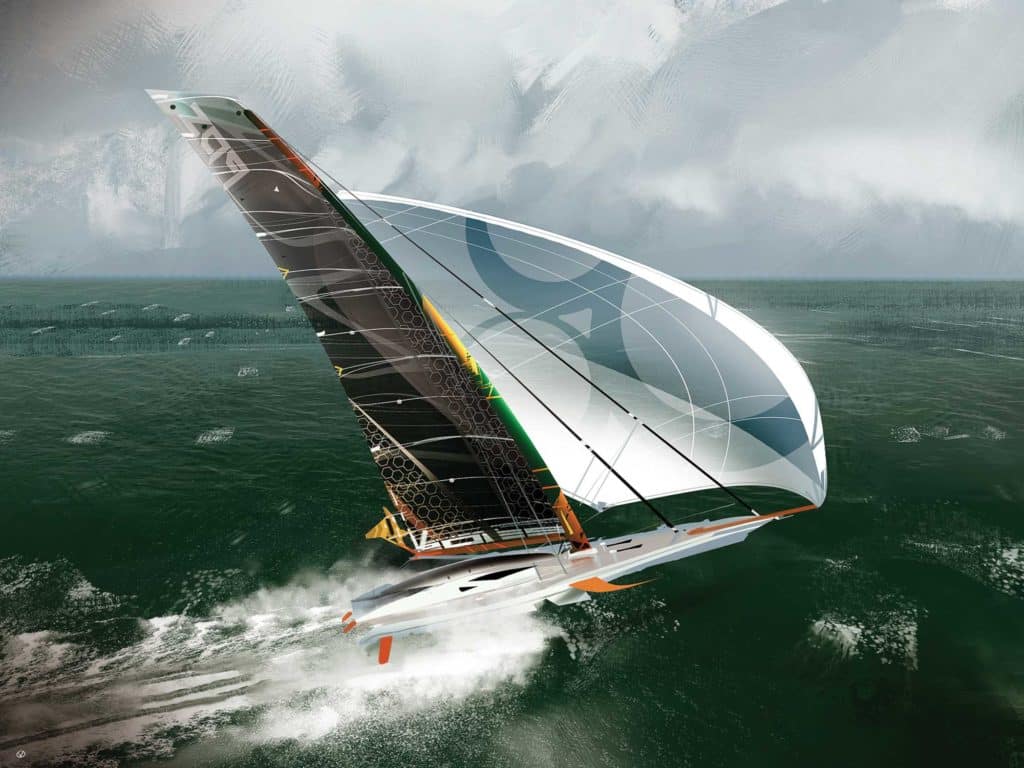
Hydrofoils have been providing dynamic lift since fish sprouted fins. And people have been employing foils ever since they first put paddle to water, and certainly since adding keels and rudders to boats. But the modern, flying America’s Cup boats, kiteboards, Moth dinghies, shorthanded offshore thoroughbreds—these are all playing in a new world in which the terms “hydrofoils” or “lifting foils” describe those oriented to raise a hull or hulls from the water. In these racing realms, if you ain’t got foils, you ain’t got nothin’.
Lifting foils that allow these boats to sometimes home in on three times the wind speed might appear to be of little interest to cruising sailors, but with such common cruising features as self-steering and autopilots, self-tailing winches, rope clutches, fin keels and faster hull shapes all having been passed down from the racing scene, one must ask, “What promise, if any, do hydrofoils hold?”
Lifted or partially lifted boat patents extend back to 1869, but workable watercraft took roots along with early flight. Italian Enrico Forlanini began experimenting with foils in 1898. In 1906, his 1-ton 60 hp foiler reached 42.5 mph. Alexander Graham Bell’s HD-4 Hydrodrome flew on Bras d’ Or Lake at 70 mph in 1919. And several sailing foiler patents began appearing in the 1950s. Notably, JG Baker’s 26-foot monohull, Monitor, flew at 30-plus mph in 1955. Baker experimented with a number of foil configurations, and at least built, if not used, the first wing mast. The first offshore foiler was likely David Keiper’s flying trimaran, Williwaw , in which he crisscrossed the Pacific in the 1960s.
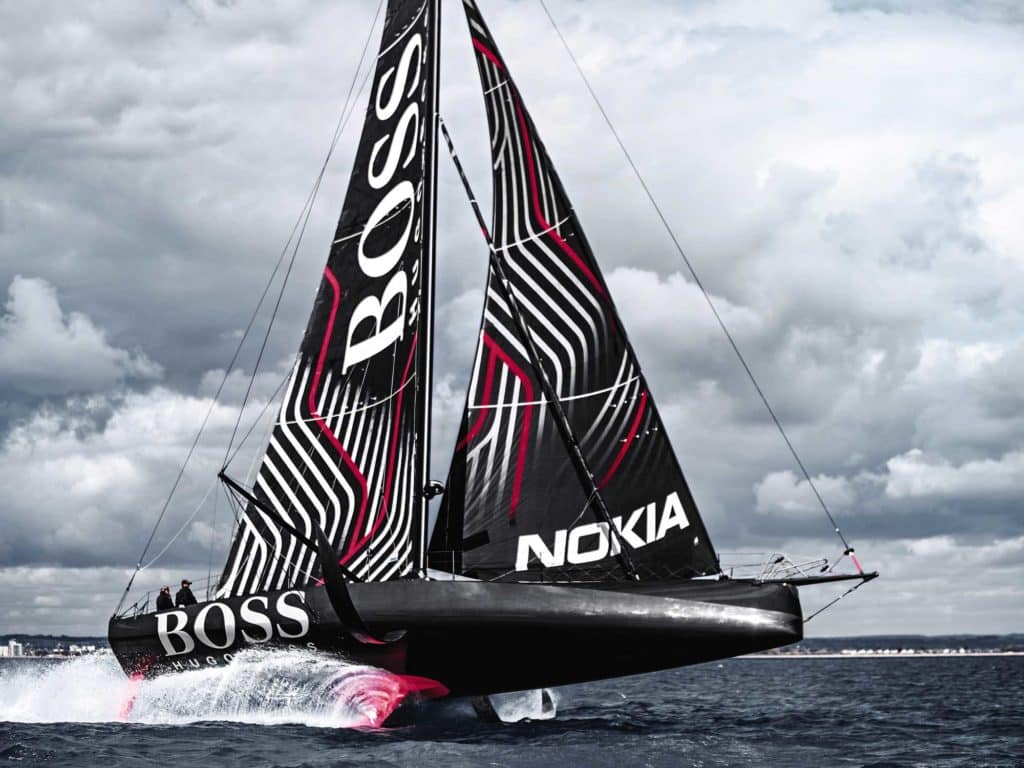
By the 1980s, numerous speed-trial and foil-enhanced offshore-racing multihulls showed huge promise, and have since evolved into behemoth trimarans clocking 30 to 40 knots continuously for long periods, not to mention the monohulls in the Vendée Globe (and soon the Ocean Race) that are capable of speeds exceeding 30 knots. But as boat designer Rodger Martin once reminded me, “If you want a new idea, look in an old book.” He was right. The fully foiling monohulls that will compete in the 2021 America’s Cup will bring things back full circle to the foiling monohull Monitor .
Fluid Dynamics Primer
Any foil—a wing, sail, keel, rudder or lifting foil—redirects the flow of fluid (air included), creating high- and low-pressure areas on opposite sides of the appendage, while developing lift perpendicular to the foil’s surface.
Advancements in foiling science is due in part to the hundreds of foil shapes that were tested, with tabulated results, by the National Advisory Committee for Aeronautics, the forerunner of the National Aeronautics and Space Administration. For the better part of a century now, aircraft and boat designers have been able to choose from a spectrum of refined foil sections that produce predictable amounts of lift and drag for known speeds of fluid and angles of attack, or the angle at which the foil passes through the fluid. Sections of efficient faster foils, as seen on jets or as we flatten our sails to go upwind or reach high speeds, have smaller nose radii and are thinner, with the thickest section of the foils farther aft, up to nearly halfway toward the trailing edge.
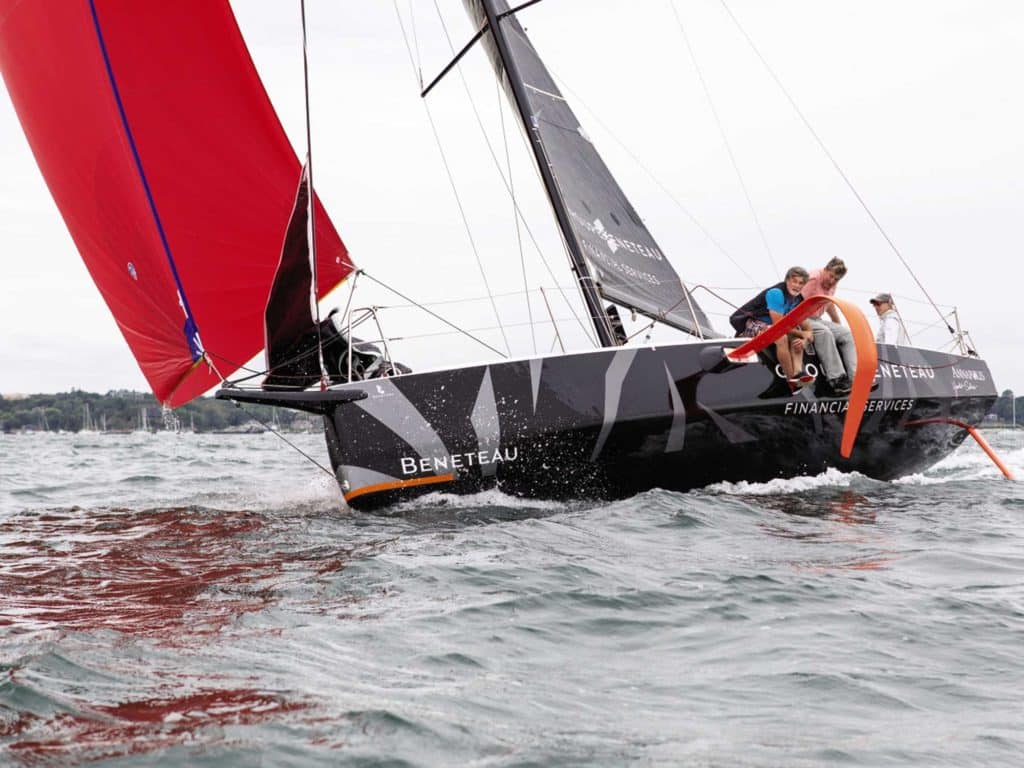
The most efficient foil sections at slow speeds are fatter, with the maximum thickness farther forward, and with larger nose radii, than faster foils. The angle to fluid flow or angle of attack also is greater. We see these slower foils on wings of prop planes and sails when off the wind or in light conditions.
Most sailors are familiar with traditional foils on boats, the teardrop sections of keels that produce lift to weather, reducing leeway, and of rudders, allowing them to steer. Even a flat plate can be a foil, but these tend to be inefficient. Such a shape is prone to fluid separation from the surface, meaning they stall easily, and they maintain poor lift-to-drag ratios. Even keels and rudders are somewhat lift-compromised because they are symmetrical and have to work with fluid coming from either side, whereas lifting foils are more like aircraft wings or propellers, with asymmetrical sections honed for performance in a more stable, fluid flow.
The point is, any foil can be employed at various angles to the surface to prevent leeway, produce increased stability, or help lift the boat out of the water. But those not required to work with fluid flowing from opposite sides can then be honed to maximize lift and minimize drag. Asymmetrical foils were used on boats like Bruce King’s bilgeboarders, including Hawkeye , back in the 1970s. And, designers, including Olin Stephens, had previously employed trim tabs behind keels to improve keel performance.
Sails, which are heeled airfoils, not only drive the boat forward, but they also produce downforce, actually increasing the dynamic displacement of the boat. To counter this and keep the boat sailing more upright, multihull designer Dick Newick first employed slanted asymmetrical hydrofoils in the outer hulls of his small charter trimaran, Lark , in 1962. A portion of the lift developed by the hydrofoil resisted leeway, while a portion worked to actually lift the leeward hull, keeping the boat more upright and reducing dynamic displacement and drag.
Anyone who has ridden on even a foil-stabilized boat will know how riding at least lightly on the waves, and especially above them, beats smashing through them. When boats lift off, everything gets a lot smoother, drag falls away, and the boat accelerates.
Cruising on Foils
But why would a cruiser want to whip over the sea? Wouldn’t this demand an inordinate amount of attention by the crew? Would lifting foils even be applicable to a boat that must have substantial displacement to carry crew and stores? Aren’t cruising-boat hydrofoils an oxymoron?
Maybe, but I believe our boats’ hulls are likely to sprout fins much as fish have as we orient foils to more efficiently resist leeway, add stability, aid steering, reduce drag, increase comfort, allow for shallower draft, and enhance wider variations in hull shapes.
Boats have gotten increasingly wide through the years to advance form stability, improve performance (primarily off the wind), and boost interior volume. But the downside is that fat boats tend to slam more upwind. What if you could reduce dynamic displacement of the boat and lift that hull even partially from the water? The result would be less slamming, especially upwind.
At the same time, what about narrower boats that are known for being more seakindly, especially when closehauled, but lack form stability to carry adequate sail area for powering upwind, and tend to roll badly downwind? Or shallow-draft vessels that are lovely for cruising, but again, tend to suffer from reduced stability? Foils can give that stability back.
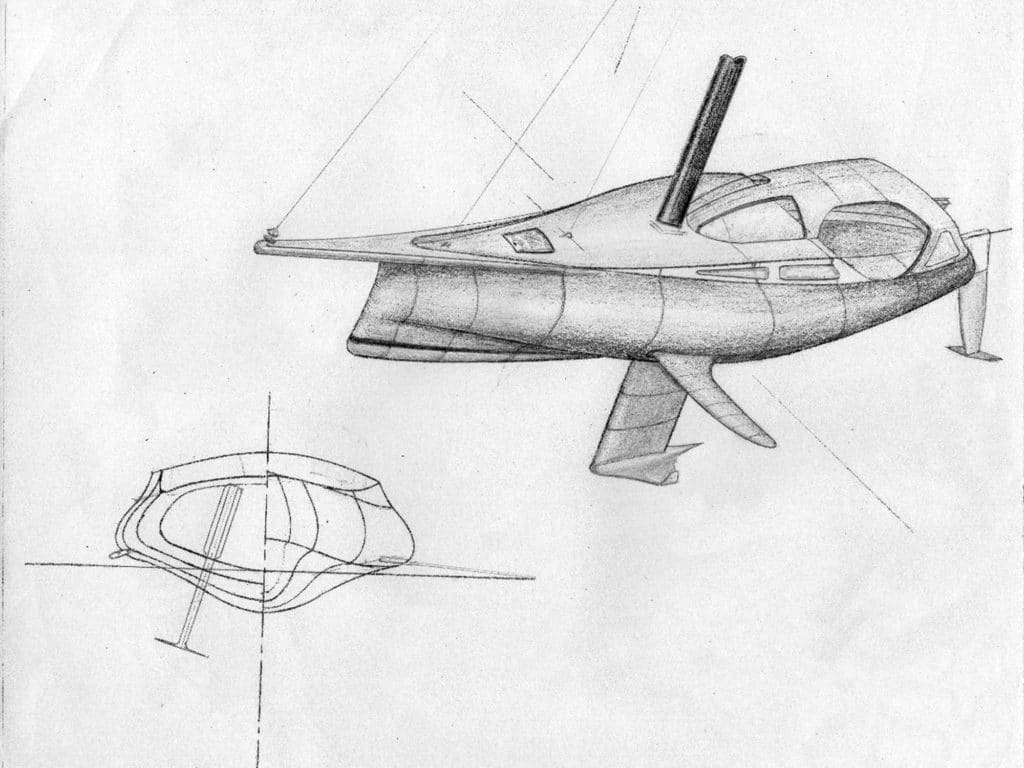
Looking ahead, boat designers might choose to reduce ballast, making up for it with a foil. In short, lifting foils can reduce boat drag and motion while increasing power and performance.
Pitching also does no favors for speed or crew comfort. Foils can come into play here as well. Foils parallel to the sea’s surface resist motion up and down, and a lifted boat skating above chop also is less prone to hobby-horsing through waves. Multihulls have always been particularly susceptible to pitching for a number of reasons, but watching videos of multihulls sailing to weather show an obvious huge advantage that foilers have compared with nonfoilers. Offshore multihulls now routinely employ T-foils on the rudders to control the fore and aft angles of the boat (attitude), a feature easily adaptable to any vessel.
OK, so what’s the cost? Obviously, the more things sticking through the hull, especially if they are retractable, the more it’s going to impact the interior. There would be added weight, complexity and cost. Foils also create noise, and there’s susceptibility to damage from hitting stuff. And let’s not forget compromises with shapes, purposes and things not yet imagined.
As for damage, it’s possible to fold the foils back into the hull. Think swinging center- boards or actual fish fins. Daggerboardlike foils can at least employ shock-absorbing systems similar to the daggerboard arrangements found in many multihulls. This includes weak links that are outside the hull, so if a foil is struck, it frees the foil to fold back or to come off before being destroyed or damaging the hull. Or, foils might hang from the deck rather than penetrating the hull, allowing them to kick up (and to be retrofitted to existing boats). These configurations also relieve the interior of intrusions, and keep the noise more removed from it. I have no doubt that numerous talented designers will be exploring all kinds of options and compromises in coming years, finding ways to make foils both practical and more than worth the compromises.
Sailing more upright, shallower draft, speed, comfort—what’s not to like? Just what is possible? I have a feeling the cruising community is about to find out.
Steven Callahan is a multihull aficionado, boat designer and the author of Adrift , an account of his 76 days spent in a life raft across the Atlantic.
- More: foils , How To , hydrofoils , print june july 2020 , sailboat design
- More How To

How To Prioritize Your Sailboat’s Spring Checklist

How to Protect Your Spars from Corrosion

Sailing Totem Refit Series: The Forward Head Makeover

Fatty Goodlander: Dealing with Chafe While Cruising

TradeWinds Debuts 59-foot TWe6 Smart Electric Yacht

Good Bread for Good Health

Center of Effort

The Halfway Point: Sailing to Bermuda
- Digital Edition
- Customer Service
- Privacy Policy
- Email Newsletters
- Cruising World
- Sailing World
- Salt Water Sportsman
- Sport Fishing
- Wakeboarding
- AROUND THE SAILING WORLD
- BOAT OF THE YEAR
- Email Newsletters
- America’s Cup
- St. Petersburg
- Caribbean Championship
- Boating Safety

Boat of the Year 2020 F101: Best Foiler
- By Dave Reed
- Updated: December 10, 2019
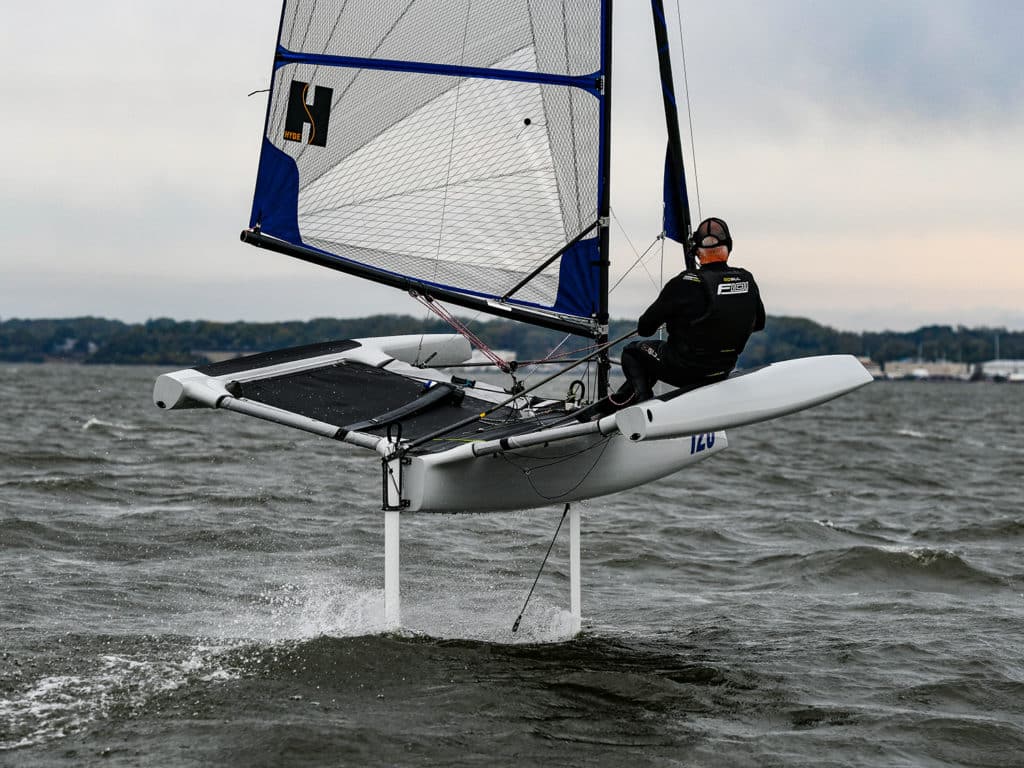
At A Glance
Price As Sailed: $24,750
Design Purpose: Learn to foil, advance skills
Crew List: One or two
Rob Andrews and his business partner Alan Hillman have been teaching foiling for a few years now, and one thing they’ve learned is we get better by sailing, not by swimming. Thus was the genesis of the F101, a craft with which they could teach the fundamentals of foiling—without the crash and burn. But it’s not just a learn-to-foil boat, either. It’s a platform with which new and experienced converts alike can take their foiling skill set to a higher level.
The key to mastering the F101, Andrews explains, is grasping righting moment. With the trimaran platform, you get plenty of it, as well as a stable boat that’s more forgiving than any other small foiler. “The trimaran configuration gives you righting moment direct from the foil in the middle hull,” he says, “and gives a measure of safety. It’s hard to capsize the boat.”
The judges learn as much when it comes time to sail the F101. In 15 knots and more, and a steep Chesapeake chop, Powlison is first to give it a go. He settles into the boat, gets his bearings, perches skittishly on the weather hull, sheets on the mainsail (no need to use the boat’s gennaker above 12 knots) and off he goes like a bat out of hell, popping up on the foils without even trying.
“The trick is getting used to the sensation of heeling to windward,” he says. “It takes a bit of trust. Once foiling, it’s quiet and fast, and I felt like I had to be really active on the mainsheet to keep it on the foils.”
That’s true of any foiler, but the beauty of the F101, the judges agree, is when you do lose it, it’s no big deal. The boat drops off its foils, the bows auger in and you get a face full of water; but just reset, bear away and try again.
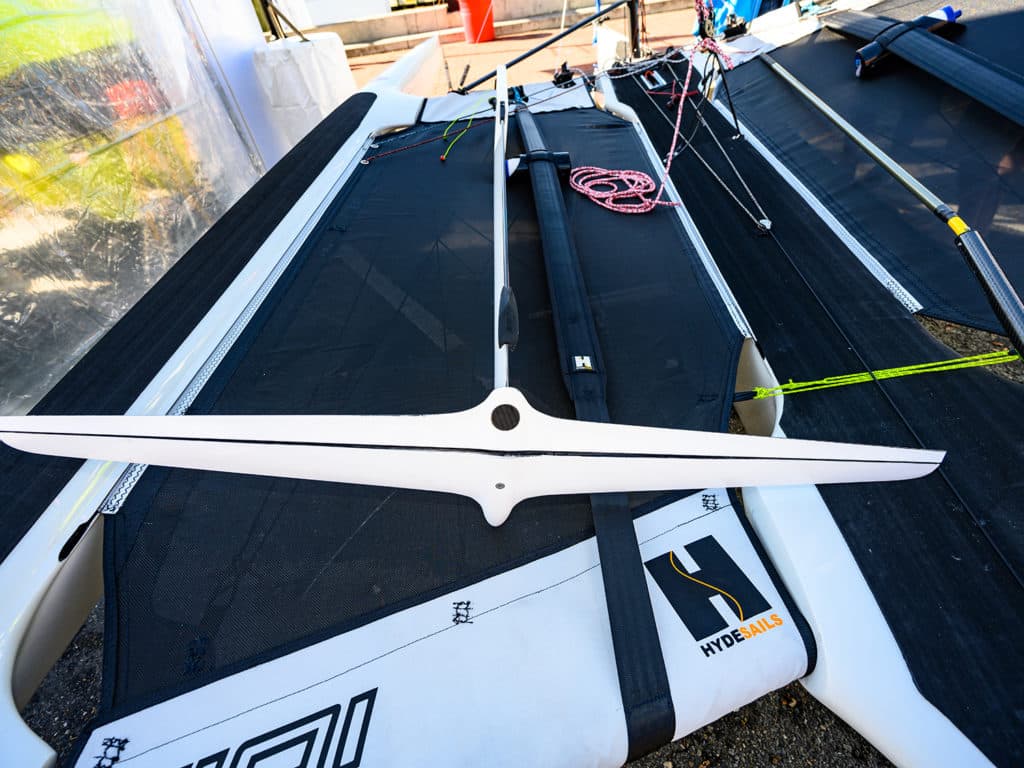
“The hull shape picks up the buoyancy gently,” Stewart says, “which makes it depress smoothly and prevents it from pitchpoling. When I dumped it a few times I thought I was going in, but not a chance. You quickly realize there’s plenty of floatation there to save you. In flat water, with one day of training you’d get up to speed quickly.”
When teaching people to foil, Hillman starts with “skimming,” a ride height barely above the surface. As the sailor becomes more accustomed to how the boat behaves, there’s a simple line adjustment at the foil head: Dial it up one setting and increase your ride height.
As you’re sailing, the foil wand hanging behind the trailing edge effectively feels where the boat is riding relative to the water and actuates the main flap. In light winds, it gives you more lift, and the boat pops up on the foil. Get too high, and the wand drops down even further, forcing negative lift on the flap, which brings you back down to your desired height and prevents the foils from breaking the surface.
In terms of construction, the judges praise its carbon-and-epoxy build quality and the all-up weight of 180 pounds, which makes it easy to get to and from the water. With the F101 sitting on its dolly in the boat park, going sailing is as simple as pulling back the covers, hoisting the main and launching from a dock, beach or boat ramp with minimal fuss.
“What I like about it is that it’s one of those boats that you buy and don’t need to add anything to it,” Allen says. “There’s nothing to change out or upgrade.”
For simplicity, the boat is set up with adjustments that let you ratchet up the experience as you climb the learning curve. On the rudder foil, for example, there is a clear numbering system so that as you twist the tiller extension, you change the rudder rake. The baseline setting is zero, and it’s the same for the main foil. The only thing left is to balance the forces with the mainsheet.
“When I first got up on the foils, I was thinking to myself, ‘This is too easy; I should be working harder,’ ” Powlison says. “As they said, this boat solves a lot of the problems associated with other foiling dinghies. It’s a great high-performance boat that represents the next step in making foiling accessible to the public.”
See All Winners
Other Winners:
- 2020 Boat of the Year
- Best Crossover
- Best Multihull
- Best Foiler
- Best Dinghy
- More: BOTY , boty 2020 , foils , Sailboats
- More Sailboats

Nautor Swan Has A New Pocket Rocket

Pogo Launches its Latest Coastal Rocket

A Deeper Dive Into the Storm 18

2024 Boat of the Year Best Recreational Racer: Z24

How the Hobart Was Won

Into the Dink

Sally Helme, Marine Industry Icon Passes
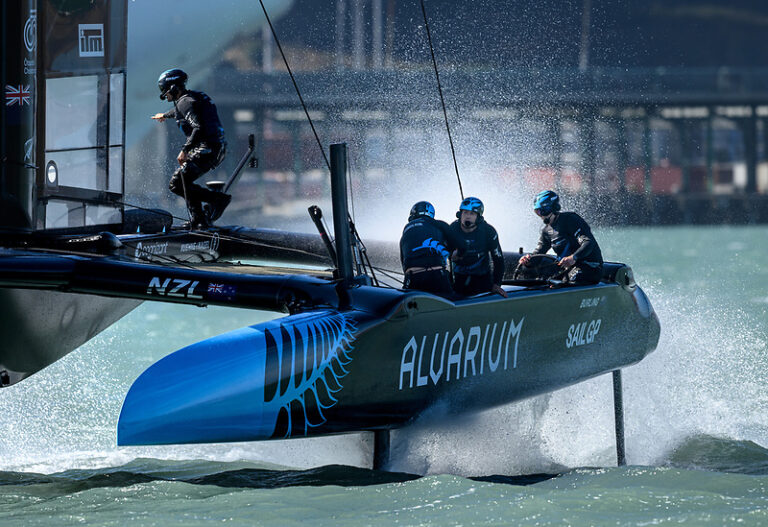
SailGP’s New Zealanders Win Destructive Event No. 9

- Digital Edition
- Customer Service
- Privacy Policy
- Cruising World
- Sailing World
- Salt Water Sportsman
- Sport Fishing
- Wakeboarding

Service Locator
- Angler Endorsement
- Boat Towing Coverage
- Mechanical Breakdown
- Insurance Requirements in Mexico
- Agreed Hull Value
- Actual Cash Value
- Liability Only
- Insurance Payment Options
- Claims Information
- Towing Service Agreement
- Membership Plans
- Boat Show Tickets
- BoatUS Boats For Sale
- Membership Payment Options
- Consumer Affairs
- Boat Documentation Requirements
- Installation Instructions
- Shipping & Handling Information
- Contact Boat Lettering
- End User Agreement
- Frequently Asked Questions
- Vessel Documentation
- BoatUS Foundation
- Government Affairs
- Powercruisers
- Buying & Selling Advice
- Maintenance
- Tow Vehicles
- Make & Create
- Makeovers & Refitting
- Accessories
- Electronics
- Skills, Tips, Tools
- Spring Preparation
- Winterization
- Boaters’ Rights
- Environment & Clean Water
- Boat Safety
- Navigational Hazards
- Personal Safety
- Batteries & Onboard Power
- Motors, Engines, Propulsion
- Best Day on the Water
- Books & Movies
- Communication & Etiquette
- Contests & Sweepstakes
- Colleges & Tech Schools
- Food, Drink, Entertainment
- New To Boating
- Travel & Destinations
- Watersports
- Anchors & Anchoring
- Boat Handling
Hydrofoils: Boats That Fly
Advertisement
Hydrofoils make everything from water skis to sailboats to giant ferries faster (much faster). But how the heck do they work?
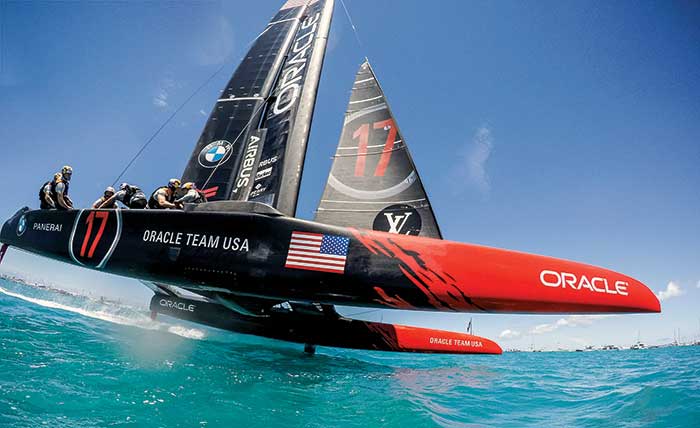
Oracle Team USA's AC50 "flying" at nearly 50 mph. (Photo: Ricardo Pinto)
Ever wonder why a sleek, powerful recreational boat is not even as fast as a typical economy car? It has to do with friction. An economy car needs a little over 100 horsepower to speed by at 100 mph, but pushing a boat through the water that fast takes several hundred horsepower. The reason is that water is almost 800 times denser than air.
Imagine standing on your dock in a 10-knot wind — it's not hard to do. Now imagine being in a river trying to stand up to a 10-knot current. The water is so much denser that no matter how strong you are, you'd be swept away. A boat hull has to push through all that dense water while a car can slip through the air much easier.
Planing boats are able to go faster than displacement boats because they lift part of their hull out of the water as they race over their bow wave, but there's still a lot of friction from the water on the rest of the hull. If you could get the hull all the way out of the water, you'd eliminate that friction, and the boat could go faster with the same amount of power.
The Science
Most of us have a pretty good understanding of how an airplane flies. As air flows over and under the wings (also called airfoils), it creates lift. Once an airplane is going fast enough, the lift that the wings create allow it to rise above the earth.
If you were to mount a wing or two (called hydrofoils) under a boat, all that dense water can be put to good use by pushing the boat's hull out of the water. Then friction only acts on the small foils, not on the whole hull, which is why a 130-foot hydrofoiling sailboat can "fly" at over 50 knots. Powerboats have added friction from the propulsion system that has to remain in the water, but even then, large hydrofoiling ferries can exceed 45 knots.
Speed is not the only advantage that hydrofoils give boats. Because the hull is out of the water, all the energy from waves that would normally pound against the boat pass harmlessly underneath it, creating an eerily smooth ride. Even so, hydrofoiling is typically best in somewhat protected waters.
Don't look for hydrofoils on your next runabout anytime soon because they're much more difficult to engineer and typically triple the cost of a boat. The good news is that there are other ways to 'foil that are affordable — see "Experience Hydrofoiling For Yourself" at below.
Experience Hydrofoiling For Yourself
Hydrofoil kiteboards.
If you've even seen a kiteboard zooming in a strong breeze, you know they're plenty fast. Add a hydrofoil, and suddenly you add a new dimension. These boards take lots of skill and practice to master, but the ride is said to be much smoother and even faster than a conventional kiteboard. Cost starts at around $1,000.
Hydrofoil Waterskis
These single-ski hydrofoils are really a sit-on-ski, and once you've mastered the technique, the foils will lift you up and you'll be "flying." Unlike conventional skis, these aren't designed for speed, and 18 mph is where they typically "liftoff' and suggested top speed is about 25 mph. It's also important not to ski in shallow water due to the depth of the foils. Cost is typically $1,500 and up.
Hydrofoil Windsurfers
Not content to take a surfboard and add a sail, windsurfers developed foils that allow the board to "levitate." The biggest advantage is the smoothness of the ride — a real benefit because these rigs usually sail in very strong winds with plenty of chop. Cost is about $2,500 to get started.
Hydrofoiling Small Sailboats
You don't have to spend millions on a boat like the America's Cup racers if you want to hydrofoil. The Waszp costs about $10,000, though even for dinghy racers, there's a learning curve to get these boats on their foils, with speeds up to 27 mph.
Note that most companies suggest wearing a helmet when using foiling products because of the speeds achievable and the hard, sharp foils these devices have.
Foiling The Competition
America's Cup boats are often what people think of when they hear the word "hydrofoil." Hal Youngren, an aeronautical engineer and one of the designers for the 2013 and 2017 America's Cup racers, says the difference in speed that foils make is impressive. The fastest nonfoiling catamarans in previous races could barely reach 35 knots, while the 2017 foiling cats hit 50 knots. Youngren says that these 50-foot cats are able to lift their hulls completely out of the water using only about three-quarters of a square meter of foil area (about the size of a medium-sized TV). Below about 15 knots, he says, the boats sail much like a nonfoiling boat with hulls in the water, but once over that speed, the boats start to "fly" and their speed dramatically increases.
The America's Cup Class AC75 Boat Concept Revealed
An exciting new era in America's Cup racing was unveiled in November 2017 as the concept for the AC75, the class of boat to be sailed in the 36th America's Cup is released illustrating a bold and modern vision for high performance fully foiling monohull racing yachts.
The America's Cup AC75 Boat Concept Revealed
The Emirates Team New Zealand and Luna Rossa design teams spent the previous four months evaluating a wide range of monohull concepts. Their goals have been to design a class that will be challenging and demanding to sail, rewarding the top level of skill for the crews; this concept could become the future of racing and even cruising monohulls beyond the America's Cup.
The AC75 combines extremely high-performance sailing and great match racing with the safety of a boat that can right itself in the event of a capsize. The groundbreaking concept is achieved through the use of twin canting T-foils, ballasted to provide righting-moment when sailing, and roll stability at low speed.
An underlying principle has been to provide affordable and sustainable technology "trickle down" to other sailing classes and yachts. While recent America's Cup multihulls have benefitted from the power and control of rigid wing sails, there has been no transfer of this technology to the rigs of other sailing classes. In tandem with the innovations of the foiling system, Emirates Team New Zealand and Luna Rossa are investigating a number of possible innovations for the AC75's rig, with the requirement that the rig need not be craned in and out each day. This research work is ongoing as different concepts are evaluated, and details will be released with the AC75 Class Rule before March 31, 2018.
The America's Cup is a match race and creating a class that will provide challenging match racing has been the goal from the start. The AC75 will foil-tack and foil-gybe with only small maneuvering losses, and given the speed and the ease at which the boats can turn the classic pre-starts of the America's Cup are set to make an exciting comeback. Sail handling will also become important, with cross-overs to code zero sails in light wind conditions.
A huge number of ideas have been considered in the quest to define a class that will be extremely exciting to sail and provide great match racing, but the final decision was an easy one: the concept being announced was a clear winner, and both teams are eager to be introducing the AC75 for the 36th America's Cup in 2021. — AmericasCup.com
Related Articles
The truth about ceramic coatings for boats.
Our editor investigates the marketing claims of consumer-grade ceramic coatings.
Fine-Tune Your Side Scan Fishfinder
Take your side-scanning fishfinder off auto mode, and you’ll be spotting your prey from afar in no time
DIY Boat Foam Decking
Closed-cell foam flooring helps make boating more comfortable. Here’s how to install it on your vessel
Click to explore related articles
Charles Fort
Contributing Editor, BoatUS Magazine
Charles Fort is BoatUS Magazine's West Coast Editor. He often writes local news items for BoatUS Magazine's Waypoints column and contributes to Reports, in-depth tech features in every issue written to help readers avoid accidental damage to their boats. He is a member of the National Association of Marine Surveyors, he's on ABYC tech committees, and has a 100-ton U.S. Coast Guard license. He lives in California.
BoatUS Magazine Is A Benefit Of BoatUS Membership
Membership Benefits Include:
Subscription to the print version of BoatUS Magazine
4% back on purchases from West Marine stores or online at WestMarine.com
Discounts on fuel, transient slips, repairs and more at over 1,200 businesses
Deals on cruises, charters, car rentals, hotel stays and more…
All for only $25/year!
We use cookies to enhance your visit to our website and to improve your experience. By continuing to use our website, you’re agreeing to our cookie policy.

- FlySafe ® Foil Control
- iFLY Reviews
- Our Partners
- Distributors
- Class Association
Enter your keyword

“iFLY15 is the unique combination of high performance with easy accessibility – for maximum performance and maximum fun.”
Cec catamarans -ifly15 team, “we love speed while keeping control – high speed needs to be controllable. the flying boat of the future, is a stable foiling sport catamaran.”, cec catamarans – ifly15 team, „ foiling: one of the things you have to experience to really feel it. “, jimmy spithill, skipper oracle team usa, “stable flight is the key to high performance sailing”, “ifly15 – get the balance right between a nice sporting challenge and a reasonable and controllable level – enjoy the exhilaration, the speed and the adrenaline in your veins, but always stay master of the situation “, “stable flight attitude is the most important prerequisite for high performance sailing.”, victor diaz de leon, sailgp team usa, “stable flight attitude is key for easy foiling. ifly15 with superior flight stability delivers immediate flying fun within the first minutes. advantage through high-tech.”, “the ifly15 is the quickest boat around the course, … “, arno terra – sailor, ifly 15 one design and ifly razzor pro, the performance foiling catamaran, for maximum speed and maximum control.
- Easy access to a high HIGH PERFORMANCE FOILING CATAMARAN
- Automated DYNAMIC FLIGHT Assistance SYSTEM – FLYSAFE® FOIL CONTROL
- highest quality standards – High-tech full carbon sailboat
- completely modular – fully customizable
- adjustable rake – MAIN FOIL DIFFERENTIAL during sailing for even more performance in the version IFLY Razzor Pro
- Foiling Versatility and Speed …
The quality and performance have been proven for 8 years and further developed to maximum perfection in every detail
IFLY HYDROFOIL SAILING – EXCELLENCE, FIELD PROVEN TO PERFECTION
Racing and more …..
⦿ Have a high performance racing machine on regattas
⦿ single handed or double Foiling
⦿ crew weight up to 180 kg
⦿ Racing and fun:
⦿ Sail with Family & friends
in any sailing condition:
⦿ Full foiling – upwind and downwind
⦿ Waves and Flat waters
⦿ Light and strong winds
⦿ early take off
⦿ Foiling maneuvers
Transport and Facilities
⦿ Easily transportable on a road trailer
⦿ Slipped with a conventional beach trolley
⦿ ready to sail in 20 minutes
⦿ iFLY15 is designed to sail on the sea and lakes
Stay tuned for foiling events and specials!
Flysafe® Flight assistance
Main foil differential technology – mdt, innovative, sophisticated foil control for unbeaten performance, high speeds and easy access, ifly15 and ifly razzor pro, ifly main foil differential – mdt, ifly razzor pro.
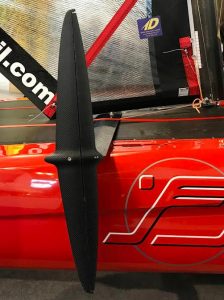
early take off in lightest breeze
F oiling maneuvers are heavily supported, superior flight attitude through active foil control, dynamic control of f light high , pitch and role, non-linear control and feedback control system for best flight stability, even in waves, the foils do not need to be manually manipulated, optimized performance: advanced sailors can adjust rake and gearing, more about flysafe®>>>, active flight assistance, the foil can be trimmed actively while sailing, the key to maximum performance , mdt for performance-orientated pro sailor, mdt extends the flysafe® foil control, to sail large xxl rigs, more about main foil differential ->>>, performance downwind: staying on the foils, full foiling, in 5-6kts tws, reaching max. boat speeds of up to 2.5*tws, performance upwind: full foiling from 8kts. tws, taking off from 7kts tws, video youtube channel, ifly15 foiling catamaran.

The most innovative development in foiling technology
About ifly15, stable flight is key for both: first for highest performance and foiling in a wide wind range, including rough and wavy conditions, but also easy access into foiling…...
iFLY stands for uniqueness in design and function. Its superior Flysafe ® active foil control system autonomously supports the stable horizontal flight position in the longitudinal and lateral direction. The 4 T-Foils do not have to be operated by the sailor during sailing.
Average skilled dinghy or catamaran sailors with some trapeze experience can safely foil with the iFLY15 after only a few hours. Quick access – the immediate sensation of success – steep learning curve. In the hand of an experienced sailor, iFLY15 offers a whole new sailing experience with previously not experienced speeds and agile maneuverability.
The flight control system, combined with numerous fine-tuned innovations , ensures safe foiling even in strong winds and rough seas.. Stable flight attitude allows pushing hard, so in good conditions, iFLY reaches high boat speed beyond 30 knots in a controllable way.
IFLY15 offers freedom to fly alone or in pairs. Due to the exclusive use of high-tech materials , iFLY15 is extremely rigid and weighs less than 90 kilos ready to sail. With its low weight and its state-of-the-art hydrofoils, it is airborne in winds as low as 2Bft. / 6 Knots.
iFLY15 has a length of only 15 feet, is easy to transport, quick to get ready to sail, and can be easily slipped from the beach using a conventional beach trolley.
Its sophisticated design reflects the highest demands on quality and function.
iFLY15 – customer reviews
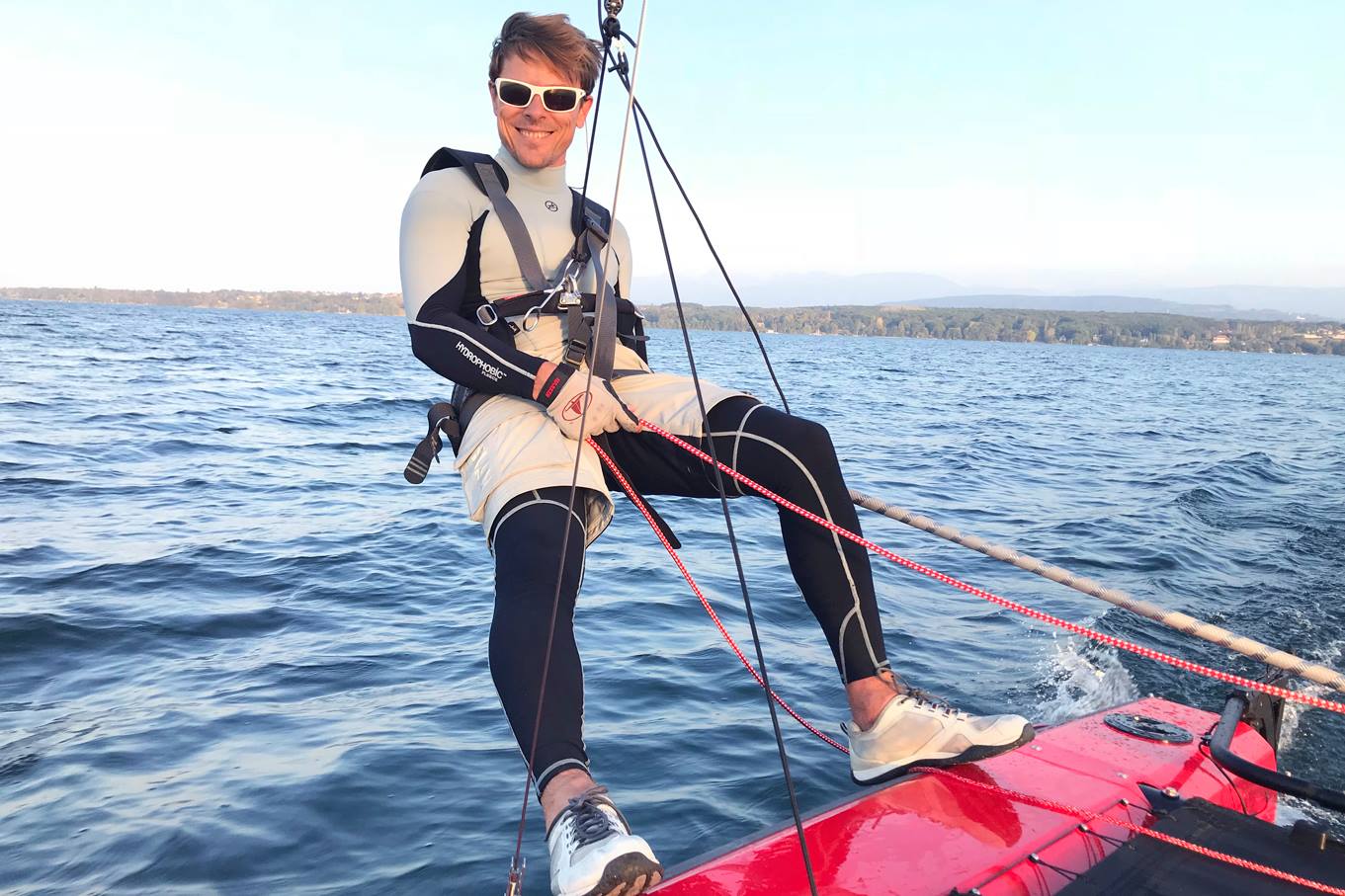
« LESS CRASHING IS MORE FUN »
MARCUS LYNCH, PROFESSIONAL SAILOR AND OLYMPIC COACH, GC32 OMAN, NACRA17
« I WAS INITIALLY AMAZED AT HOW EASY TO HANDLE THE IFLY IS AND AT HOW IDLE THE BOAT IS EVEN IN STRONG WINDS. »
ANTOINE, IFLY OWNER FROM GENEVA
VERY STABLE, EXTRAORDINARY STABLE. IT IS EXTREMELY INTERESTING, BECAUSE YOU IMMEDIATELY SEE THE ACCESSIBILITY OF THE BOAT.
FRANÇOIS GABART
« GREAT BOAT, LIKE A MOTH ON STEROIDS ! »
VICTOR DIAZ DE LEON, MIAMI, PROFESSIONAL SAILOR. US TEAM SAILGP, INTERNATIONAL MOTH, MATCHRACING MELGES 32, J70
WHAT A GREAT BOAT THIS IS, AND I ABSOLUTELY LOVE IT”
PHILIP WALKER
« THE DYNAMIC FLIGHT CONTROL SYSTEM ALLOWS LONG AND STABLE FLIGHTS »
GERHARD FLORIN, IFLY OWNER FROM GENEVA, SWITZERLAND
TO FELLOW SAILORS WHO LOVE THE THRILL OF SAILING WITH SPEED WHILE MAINTAINING CONTROL”
ROY BALLENTINE
« WELL BALANCED AND RAKE DIFFERENTIAL ALLOWING FOR GREAT PERFORMANCE UPWIND! »
CARLOS ROBLES,PROFESSIONAL SAILOR 49ER, PALMA DE MALLORCA
« A SENSATIONAL FOILING EXPERIENCE. THE SPEED IS IMPRESSIVE »
INGMAR WARNICKE: COMMODORE OF YCSO, YACHT CLUB SCHARBEUTZ, BALTIC SEA
⭐ ⭐ ⭐ ⭐ ⭐

IFLY RAZZOR PRO – THE NEW IFLY FOR EXPERIENCED SAILORS
THE SINCE 7 YEARS PROVEN IFLY15 WITH FLYSAFE® DYNMAMIC FOIL CONTROL has now a pur Racing fellow: THE iFLY RAZZOR Pro. THE iFLY racing VERSION ENABLES EVEN HIGHER PERFORMANCE, to sail in extremely tough conditions and allows sailing with XXL rigs. THE MAIN DIFFERENCE BETWEEN THE IFLY15 ONE DESIGN AND THE IFLY RAZZOR PRO IS A BIGGER RACING RIG, SPECIAL FOILS AND THE MAIN FOIL DIFFERENTIAL (MDT), WHICH IS MANUALLY TRIMMED BY THE SAILOR. THE MDT IS WORKING HAND IN HAND WITH THE FLYSAFE® DYNAMIC FOIL CONTROL SYSTEM.
flying – sailing – Blog
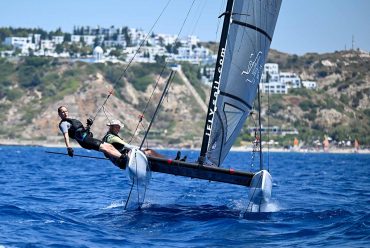
“We’re taking off! Foiling is THE Watersports Trend! – „Boot International 2024“ in Düsseldorf / Germany once again showcases: Foiling is THE trend in watersports.
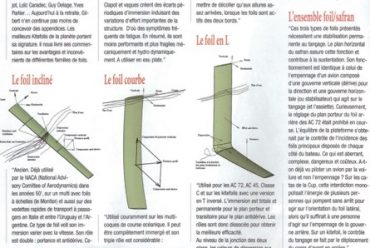
Performance Sailing – Sail GP News: Racing on the Edge – T-Foil proves to be the winning design

Regatta and foiling News: Long distance Race – Duc d’Albe 2023 – Club Multicoques Hyères – sailing Race @iFLY Razzor Pro
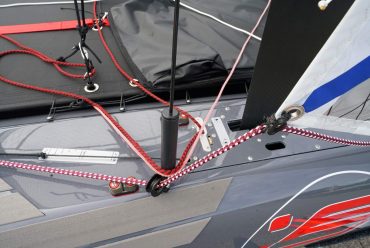
iFLY Main Foil Differential Technology – MDT Foil Control – high Performance sailing
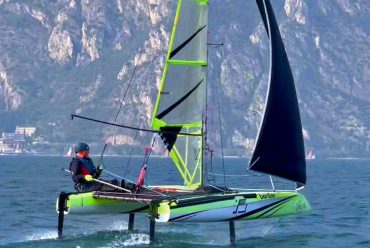
IFLY FOILING Adventure
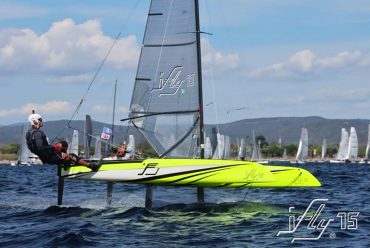
FOILING – REGATTA – EVENTS
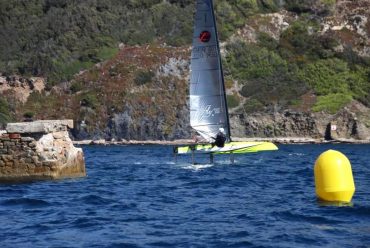
Long distance Race – Duc d’Albe 2021 – Club Multicoques Hyères – sailing Race @iFLY Razzor Pro
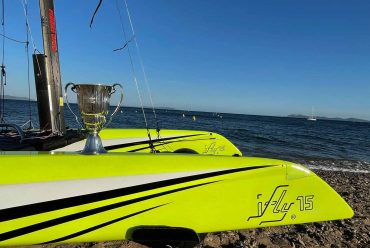
INTERNATIONAL IFLY foiling FLEET RACE 2021

iFLY15 successfully crossing the English channel / world record Attempt Cowes to Dinard / Saint Malo
Catamaran europe central, the iflysail team, is looking forward to your message.
Yachting World
- Digital Edition


Foiling: the history of the hydrofoiler
- Matthew Sheahan
- December 9, 2021
Foiling has taken the watersports world by storm in recent years, but the history of the hydrofoiler goes back further than you might think

The biggest revolution to hit watersports in general has been foiling , and it’s easy to view the use of hydrofoils as a relatively recent phenomenon.
In truth, although foiling has really taken off (if you’ll forgive the pun) in recent years in everything from surfing to sailing, paddleboarding , and beyond, the history of the hydrofoil goes back far further than many might assume.
The world of powered foilers kicked things off early but even sail-powered foiling craft are much older than you may realise.
The history of foiling
The early development of hydrofoils started over 100 years ago when Italian Enrico Forlanini achieved 36.9 knots with his 60hp airscrew-driven boat in 1906. Several engineers took notice, among them the Wright Brothers and Alexander Graham Bell, both of whom experimented with foilborne craft.
Within a few years speeds moved briskly into the 50-knot range for power boats, but it wasn’t until 1938 that a sailing boat got up onto foils with Americans Gilruth and Carl who managed to foil at five knots. Here are some key moments:
1869 – First patent for hydrofoil was for a rowing boat, French application made by Emmanuel Denis Fargot.

First hydrofoil boat built by Enrico Forlanini
1906 – First hydrofoil boat designed and built by Enrico Forlanini. It had a ladder-type construction with multiple struts supporting multiple wings. It achieved 36.9 knots.

Alexander Graham Bell’s HD-4
1918 – Alexander Graham Bell and Casey Baldwin launched their HD-4, a five-tonne vessel powered by two liberty aircraft engines of 350hp each and reached 52 knots. The HD-4 Hydrodrome later set a new world record of 61.58 knots.
1938 – First known sailing hydrofoil was produced by Americans R. Gilruth and Bill Carl.

Gordon Baker’s Monitor
1955 – Monitor clocked at 25 knots. She was designed by Gordon Baker and built by the Baker Manufacturing Company of Evansville, Wisconsin. The US Navy shared part of the cost of construction.
In October 1956 she was recorded at 30.4 knots and was later said to have sailed close to 40 knots.

David Kelper’s Williwaw
1970 – The first hydrofoil cruiser. David Keiper’s Williwaw cruised throughout the South Pacific clocking up 20,000 miles.
1974 – Mayfly foiling cat established world record for A Class in Weymouth at 19.38 knots. In 1977 she set the bar higher at 23 knots.

Icarus, a modified foiling Tornado Photo: Claude Breton
1976 – Icarus , a modified foiling Tornado (above), set a new world record in B class at 20.70 knots. By 1985 Grogono and Fowler had raised their speed to 28.14 knots.

Offshore foiler Paul Ricard
1980 – Eric Tabarly beat the schooner Atlantic ’s transatlantic record by more than two days in offshore foiler Paul-Ricard .
1990 – Hobie Trifoiler, a twin-sail trimaran with a mainsail on each outrigger, capable of 30 knots, making it the fastest production sailboat in the world. The prototype, Longshot , was developed by Dan and Greg Ketterman with Russell Long.
1992 – Russell Long broke his own world records for the fourth time in the Trifoiler clocking 43.55 knots.
1994 – Alain Thébault’s L’Hydroptère foiling tri launched.
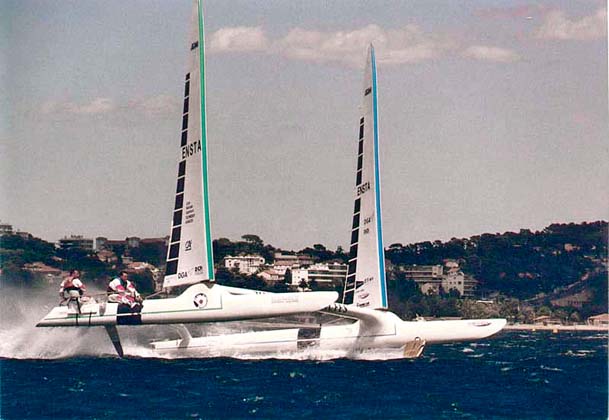
Techniques Avancées, a foilborne proa
1997 – Techniques Avancées , a French foilborne proa, set a new world speed record in the D class, at 42.12 knots
2005 – Rohan Veal wins the International Moth World Championship sailing a Moth class dinghy with hydrofoils fitted.

L’Hydroptère, former speed record holder. Photo: Christophe Launay
2009 – L’Hydroptère set new outright world speed record over 500m 51.36knots.

SailRocket2 clocked an unprecedented 64.45 knots
2012 – Sailrocket II broke L’Hydroptère ’s record to set new outright world record over 500m of 65.45knots.
2013 – The America’s Cup goes foiling as Oracle Team USA beat Emirates Team New Zealand both sailing foiling 72ft catamarans, the AC72s.

The G4 foiling catamaran
2015 – Gunboat launch the Gunboat G4, a foiling high performance cruising catamaran

IMOCA 60 Banque Populaire VIII, sailed by Armel Le Cléac’h wins the 2016/2017 Vendee Globe on a semi-foiling design
2016 – The Vendée Globe sees semi-foiling IMOCA 60 keelboats on the startline for the first time.
2017 – Emirates Team New Zealand win the America’s Cup in a foiling AC50 catamaran

Emirates Team New Zealand racing in the 2021 America’s Cup in Auckland, New Zealand. Photo: ACE / Studio Borlenghi
2021 – Emirates Team New Zealand defend the 2021 America’s Cup in a brand new foiling monohull, the AC75
If you enjoyed this….
Yachting World is the world’s leading magazine for bluewater cruisers and offshore sailors. Every month we have inspirational adventures and practical features to help you realise your sailing dreams. Build your knowledge with a subscription delivered to your door. See our latest offers and save at least 30% off the cover price.
- Nemesis One
- NEMESIS Zero Six
- Nemesis Zero Three
- Nemesis Zero Two
NEMESIS ONE
332ft // 101m, world's fastest hydrofoil cruising catamaran.
The ‘NEMESIS ONE’ will be the World’s Fastest Luxury Foiling Sailing Yacht, able to break the 50 knots speed barrier, while flying on computer controlled hydrofoils. Contrary to being a stripped out racing vessel, the all carbon fiber Nemesis One boasts stunning futuristic, yet comfortable interiors.
Engineered for top performance by world-renowned 'VPLP Design' and powered by AYRO's patented ‘OCEANWINGS’ wing sail, the high-tech superyacht resembles more of a stealth fighter jet, than a conventional sailing yacht.
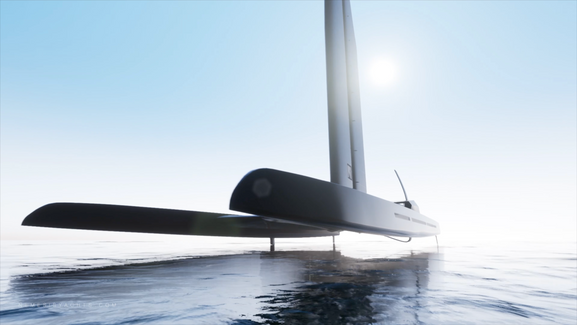
Push-button Controls
The excessive speeds the yacht will be capable of under sail, required the Nemesis team to completely abandoned the classic operating concept of: ‘Pulling lines and handling sails’.
To further minimize crew requirements, they’ve implemented state of the art hydraulic and electric controls throughout the design. Replacing bulky winches in the size of a car’s tire and line cluttered cockpits, commonly conceived when thinking of large sailing yachts.
VPLP Design & AYRO 'OCEANWINGS'
The modified 'OCEANWINGS' wing sail automatically adjusts it’s angle of attack, camber and twist, eliminating any need for manual sail trimming. Additionally, the reef and furlable wing sail is a staggering 2.6 times more efficient than a conventional sail plan of equal size.
Fully Autonomous
Flight Control & Safety
Flying on water at speeds in excess of 50 knots, leaving most performance motor yachts in her wake, won’t come at the expense of security and comfort.
Nemesis One will be equipped with the latest generation of smart LiDar (laser radar) sensors, precisely capturing the yachts surroundings.
The current sea state, especially wave height, shape and frequency, will be live monitored by LiDar as well.
All gathered data will be processed by the yacht’s mainframe and translated into precise control commands for the automated hydrofoils and rudders, making the yacht exceptionally stable & safe at any given speed.
The Nemesis One offers the unique option to exchange the port and starboard facing living modules, for ones with different interior configurations.
Making it a breeze to transform the interior layout from owner to charter setup for example. To boost her performance even further, both modules can also be completely removed, transforming the already very fast yacht into ‘Ultra-Light Race Mode’ configuration.
Even without wind, the Nemesis One will remain a zero emission vessel. Powered by a retractable hydrogen-electric propulsion, the yacht has no need for any fossil fuel. In addition to the hydrogen fuel, up to 750 sqm / 8073 sqft of solar panels, will generate up to 150kW of power, to recharge the yacht’s batteries.
Nemesis Yachts © All Rights Reserved

Hydrofoil Boats: Exploring the Future of Watercraft Technology
Traditional watercraft are lagging behind in efficiency and eco-friendliness, struggling to meet the demands of modern maritime travel.
Imagine the drag, the noise, the fuel consumption – it’s not just about speed; it’s about the impact on our oceans, the inefficiency, and the outdated experience.
Enter Hydrofoil Boats! Cutting-edge technology meets sustainability in these innovative vessels. Glide over water with unparalleled speed, minimal environmental impact, and a silent, smooth ride that redefines maritime transport.

Despite the fact that the foiling technology has been present for more than a century, hydrofoil boats have recently gained popularity among boat enthusiasts. Superyachts, racing boats, ferries, and many other types of watercraft have all used hydrofoil technology to increase their speed and efficiency.
A hydrofoil is a wing-like structure that supports a boat which produces lift as the boat’s speed rises. Lowering drag and keeping the boat above the waves, helps the boat travel quicker and more smoothly.
Given that hydrofoil boats are currently in the news once more, it is time to discuss what they are, how they operate, their benefits and drawbacks, and a serious assessment of whether or not they represent the future of boating. We’ll cover everything there is to know about hydrofoils in this article.
The History of Hydrofoils
Casey Baldwin, Enrico Forlanini, and Alexander Graham Bell—the same person who created the telephone—developed the hydrofoil technology first. By 1909, Forlanini had an operational prototype on Italy’s Lake Maggiore. The German and US Navy used the hydrofoil boat to travel through waters that were heavily mined during WWII.
The hydrofoil technology was applied to water sports in the 1960s, 1970s, and 1980s, where it was employed in kiteboards, surfboards, and air chairs. When racing teams utilized it to break speed and time records in world sailing competitions in the 2010s, it caught consumers’ attention once more. Most lately, boat manufacturers have been experimenting with the use of hydrofoils on smaller boats using outboard and propelled engines.
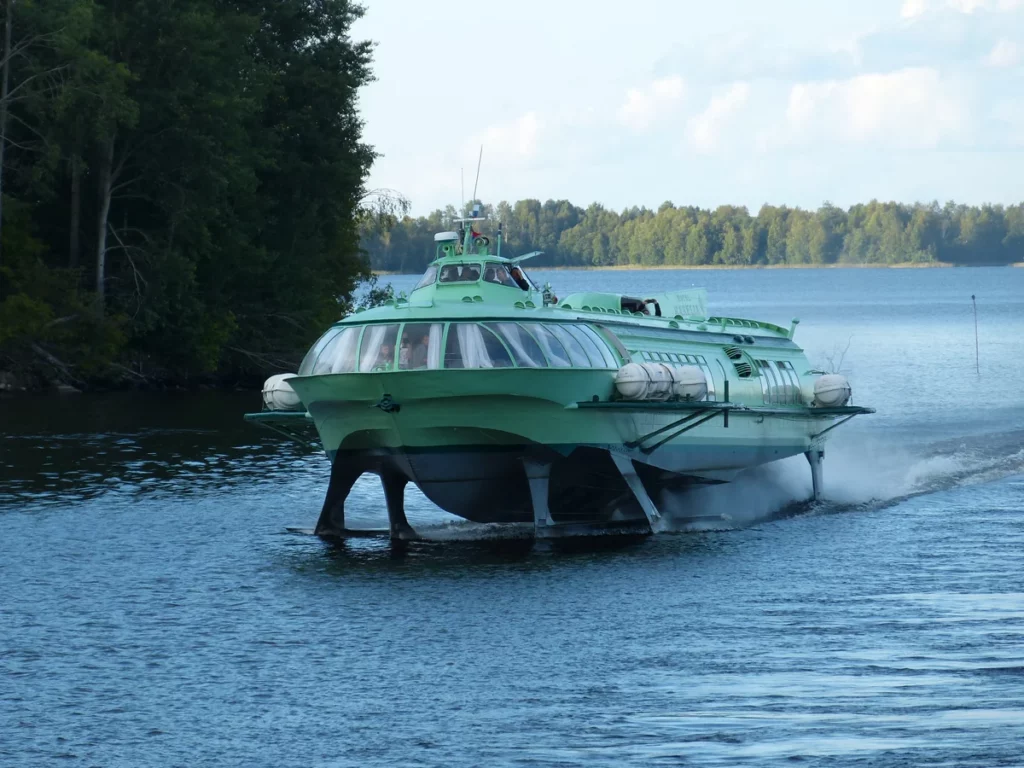
The Working Principle Of Hydrofoil Boats
A “hydrofoil” is a structure made of a wing (V), T, or U form that supports a hydrofoil boat. Surface-piercing and fully submerged hydrofoil boats are the two different varieties. The boat is raised off the water’s surface at high speeds using both varieties of hydrofoils.
When moving quickly enough, the lift from the foils is sufficient to lift the boat’s whole hull clear of the water, leaving just the foils themselves in contact with the surface. This offers amazing advantages in speed, effectiveness, and experience, all of which we will discuss soon.
Aero foils used on airplanes achieve similar results as hydrofoils in terms of reducing drag and increasing speed.
Like other power boats, hydrofoil boats are primarily propelled by propellers or water jets. Having said that, hydrofoil boats are also quite well-liked in sailing. However, using hydrofoils on sailboats requires a lot of technical skill and is primarily employed by racing teams . Commercial boats utilize them the most frequently, but lately, leisure boats are introducing them to the general public.
We are aware that hydrofoils reduce drag and allow boats to travel at higher speeds, but how does that actually work? As hydrofoil boats are essential “a boat with wings,” is the best way to describe them. When a hydrofoil boat picks up speed, it too lifts off the water, just like an airplane would do.
Large ships and ferries can frequently be lifted from the surface by their entire hulls , even while the foils themselves are immersed in the water. Being in a hydrofoil boat has a similar sensation to being in a plane with restricted airspace. It moves quickly and smoothly.
Hydrofoils require additional technology at the consumer level. Hydrofoils can have costly price tags, as we’ll discuss later. As you might expect, there are considerable safety risks associated with a boat that literally “wings” through the air.
An automatic control system that maintains flying height, foil pitch and rides smoothness is necessary for hydrofoils. This “autopilot” technology prevents the boat from smashing back into the water after it has been lifted from the surface by allowing the foil to move safely in and out of the water.
Environmental Impact and Sustainability of Hydrofoil Boats
The emergence of hydrofoil boats, particularly electric hydrofoils, marks a significant stride toward more sustainable watercraft technologies. Their environmental impact is a critical aspect of their appeal, offering a greener alternative to traditional boats.
Reducing Carbon Footprint
- Electric Propulsion : The switch from fuel-based to electric propulsion systems in hydrofoil boats greatly reduces emissions. Electric hydrofoils emit zero direct greenhouse gases, significantly cutting down the carbon footprint associated with maritime activities.
- Energy Efficiency : Hydrofoils are designed to lift the hull out of the water, drastically reducing drag and thus, energy consumption. This efficiency is a cornerstone in their sustainable design, allowing for longer ranges while consuming less power.
Noise Pollution and Marine Life
- Silent Operation : Unlike conventional boats, electric hydrofoils operate silently. This reduction in noise pollution is crucial for the well-being of marine life, which can be severely disrupted by the loud engines of traditional boats.
- Minimal Water Disruption : The unique design of hydrofoils minimizes their wake and reduces water turbulence. This has a lesser impact on marine ecosystems compared to standard hull designs , which can cause more substantial water disturbances.
Sustainable Materials and Manufacturing
- Eco-friendly Materials : Innovations in hydrofoil construction include the use of sustainable materials. Manufacturers are increasingly adopting recyclable composites and eco-friendly resins, contributing to a reduced environmental footprint in the production phase.
- Lifecycle Impact : The long-term sustainability of hydrofoils also hinges on their lifecycle impact. From manufacturing to end-of-life disposal, efforts are being made to ensure that every stage is as environmentally friendly as possible.
Challenges and Future Directions
- Battery Technology : One of the main challenges in electric hydrofoils is the development of more efficient and eco-friendly battery technology. Advancements in this area will be pivotal in enhancing the sustainability of hydrofoil boats.
- Renewable Energy Integration : Integrating renewable energy sources, such as solar panels, could further elevate the eco-credentials of hydrofoil boats, making them a truly green mode of maritime transport.
Innovative Designs and Latest Models in Hydrofoil Boats
The hydrofoil market is witnessing a surge in innovative designs and cutting-edge models, redefining the boundaries of maritime technology. This section delves into the latest trends and groundbreaking models that are shaping the future of hydrofoil boats.
Emerging Trends in Hydrofoil Design
- Aerodynamic Efficiency : Modern hydrofoils are embracing sleek, aerodynamic designs that not only enhance speed but also improve energy efficiency. These designs reduce drag and optimize lift, crucial for electric hydrofoils where battery life is a key factor.
- Modular Construction : Some of the latest hydrofoils feature modular designs, allowing for customization and adaptability to different use cases, from leisure cruising to high-speed transport.
- Smart Technology Integration : Advanced navigation systems, IoT connectivity, and automated control systems are becoming standard features in new hydrofoil models. This integration of smart technology enhances safety, performance, and user experience.
Notable Models Making Waves
- Navier 27 : As a frontrunner in the electric hydrofoil sector, the Navier 27 stands out for its range and efficiency. It’s America’s first fully electric hydrofoil, offering a silent, emission-free experience without compromising on speed or luxury.
- Candela C-8 : Hailing from Sweden, the Candela C-8 is celebrated for its blend of performance and sustainability. It’s equipped with a groundbreaking hydrofoil system that delivers a smooth ride with significantly reduced energy consumption.
- SEAir Flying RIB : The SEAir Flying RIB is a testament to versatility in hydrofoil design. This model can be used both as a leisure craft and for professional purposes, showcasing a robust design that can handle various sea conditions.
Focusing on User Experience
- Comfort and Stability : One of the key focus areas in recent hydrofoil designs is the enhancement of passenger comfort. Hydrofoils, by design, offer a smoother ride by gliding over the water’s surface, reducing motion sickness and discomfort.
- Ease of Operation : User-friendly interfaces and simplified control systems are being prioritized to make hydrofoil boats more accessible to a broader range of users, from maritime professionals to boating enthusiasts.
Sustainability Meets Luxury
- Eco-Luxury Models : Several high-end hydrofoil models are merging luxury with eco-friendliness. These boats offer premium amenities while adhering to sustainable practices, appealing to a market that values both comfort and environmental responsibility.
What Are The Pros And Cons Of Hydrofoil Boats?
The main benefits of Hydrofoils are listed below,
· Speed : This is not shocking. The majority of hydrofoils, whether they are used in sailboats, ferries, or other commercial vessels, can “fly” at speeds considerably above 50 knots (60 mph).
· Comfort : Because the boat’s hull is off the water, most waves and wakes barely affect it, leaving passengers with little to no noticeable discomfort. It is a smooth ride as a result.
· Stabilization : The boat’s stability is improved because comfort is increased (at high speeds). The hydrofoils slice across the water, lowering the watercraft’s motion index.
· Efficiency : Hydrofoils travel significantly more quickly to their destination since they aren’t affected by tiny waves and wakes that would slow most boats down. This efficiency encourages a significantly greater fuel economy for boats with conventional propellers or jet engines.
· Experience : Boating is like no other activity because of the reduced drag and wave impact. You really do feel as though you are “flying” just over the water’s surface.
The main drawbacks of Hydrofoils are found to be,
· When compared to operating a typical runabout boat, operating a hydrofoil is far more technical and demands a much more sophisticated skill set.
· Hydrofoils are only appropriate for open water or huge lakes (as of now). They are NOT appropriate for shallow water because any bottom impacts while moving could be fatal for both the passengers and the boat.
· Range of Speeds : Hydrofoils can only “fly” at particular speeds. Every boat will have a preferred speed range in which to operate. Due to the fact that the hull and foils are immersed in the water, anything below that range will result in increased drag. Anything above the range becomes hazardous and out of control.
· Costs of maintenance: Sophisticated technology requires complex maintenance and storage.
· They aren’t cheap overall. Consumer-level boats that are more in demand might cost upwards of $300,000.
Consumer Accessibility and Market Trends
The hydrofoil boat market is evolving rapidly, with consumer accessibility and market trends shifting in response to technological advancements and changing demands.
Availability and Market Expansion
- Growing Market Presence : Hydrofoil boats are becoming increasingly available worldwide, with manufacturers expanding their reach to cater to a global audience.
- Diverse Range for Different Budgets : The market now offers a range of hydrofoil boats, from luxury models to more affordable options, making them accessible to a broader consumer base.
Pricing Dynamics
- Premium Pricing for Advanced Models : High-end hydrofoil boats, especially those with advanced technology and luxury features, come with a premium price tag. However, this cost is often justified by their superior performance and lower operational expenses.
- Cost-Efficiency in the Long Run : Despite the initial higher investment, hydrofoil boats can be more cost-effective in the long run due to lower fuel consumption and maintenance costs.
Consumer Trends and Preferences
- Sustainability as a Key Factor : Environmental consciousness is driving consumer preferences, with more buyers opting for eco-friendly models like electric hydrofoils.
- Adaptability and Usage : Consumers are also looking for versatility in use – from leisure and tourism to practical applications like commuting.
Hydrofoil Boats in Competitive Sports and Racing
Hydrofoil boats are making a significant impact in the world of competitive sports and racing, known for their speed and efficiency.
Racing Circuits and Competitions
- High-Speed Competitions : Hydrofoil boats are becoming a mainstay in high-speed racing competitions, thrilling audiences with their exceptional speed and maneuverability.
- Innovations in Racing Models : Racing hydrofoils are continually being refined for better performance, with tweaks in design for maximum speed and agility.
Popularizing in Sports
- Growing Interest : The excitement and challenge of hydrofoil racing are attracting more participants and spectators, contributing to its growing popularity in the sports world.
- Training and Skill Development : As the sport grows, so does the availability of training programs and facilities for aspiring hydrofoil racers.
Technological Advancements in Hydrofoil Control Systems
The safety and performance of hydrofoil boats are heavily reliant on their control systems, and recent technological advancements have been transformative.
Innovations in Control Technology
- Automated Control Systems : Advanced hydrofoils are equipped with automated control systems that adjust the foils for optimal performance and stability in varying conditions.
- Integration with AI and Machine Learning : Some hydrofoils are now utilizing AI and machine learning algorithms to enhance navigation and operational efficiency.
Safety Enhancements
- Advanced Safety Features : Modern hydrofoils come with enhanced safety features, including collision avoidance systems and improved emergency response mechanisms.
- Reliable Performance in Diverse Conditions : Enhanced control systems allow hydrofoils to operate safely in a wider range of weather and sea conditions.
Comparative Analysis: Hydrofoil Boats vs. Traditional Boats
Comparing hydrofoil boats with traditional boats reveals distinct differences in performance, cost, and usage.
Performance Comparison
- Speed and Efficiency : Hydrofoil boats generally offer higher speeds and better fuel efficiency due to reduced drag.
- Stability and Comfort : The design of hydrofoils provides a smoother ride, especially in choppy waters, enhancing comfort and reducing motion sickness.
Cost Analysis
- Initial Investment : Hydrofoil boats typically require a higher initial investment compared to traditional boats.
- Operational Costs : Over time, the operational costs of hydrofoils can be lower due to their efficient fuel usage and lower maintenance requirements.
Usage Scenarios
- Versatility : Hydrofoils are versatile in their application, suitable for everything from leisure cruising to professional racing.
- Environmental Impact : Hydrofoils, especially electric models, have a significantly lower environmental impact, making them a more sustainable choice.
Will Hydrofoils Revolutionize The Boating Industry?
It’s difficult to predict whether or not hydrofoils will become more widely used among consumers. Hydrofoil boats are currently merely pleasant toys for the privileged. Before you see them on your local river, manufacturers still have a few operational challenges to solve.
Hydrofoils are only suitable for huge lakes or wide seas due to their vulnerability to damage in shallow water. Although they are not yet as prevalent as your typical jet boat, hydrofoils are becoming more and more well-liked. You shouldn’t be shocked if you start to see more of them if the nearby water is a huge lake or wide ocean.
Future Prospects: Hydrofoil Technology in Maritime Transport
The application of hydrofoil technology in maritime transport is poised for transformative growth, offering potential solutions to some of the industry’s most pressing challenges.
Expanding Beyond Recreational Use
- Commercial Transportation : Hydrofoils are being eyed for commercial transportation, including passenger ferries and cargo vessels. Their speed and efficiency could revolutionize how goods and people move across water.
- Tourism and Leisure Industry : In the tourism sector, hydrofoils offer an attractive option for high-speed sightseeing tours and luxury travel, combining speed with comfort.
Large-Scale Environmental Benefits
- Reducing Maritime Emissions : With the maritime industry increasingly focused on reducing its carbon footprint, hydrofoils, particularly electric models, present a viable solution to cut down emissions.
- Minimizing Impact on Marine Ecosystems : The reduced wake and lower noise levels of hydrofoils can help mitigate the impact on marine life, a significant consideration for eco-conscious maritime operations.
Innovations in Ferry and Cargo Services
- High-Speed Ferries : Hydrofoil technology is ideal for ferry services, where speed and efficiency are paramount. Cities with significant waterway networks could see a transformation in their public transport systems.
- Efficient Cargo Transport : For cargo transport, hydrofoils could offer faster delivery times, potentially reshaping supply chain dynamics, especially for time-sensitive goods.
Challenges and Research Areas
- Infrastructure Development : A key challenge is the development of infrastructure that can support the unique needs of hydrofoil vessels, including docking and maintenance facilities.
- Ongoing Research and Development : Continuous research is needed to improve the scalability, safety, and environmental impact of hydrofoils in large-scale maritime transport.
Hydrofoils offer certain undeniable advantages over conventional powerboats. They get lifted off the water, which increases speed and reduces drag while also facilitating a more relaxing and effective ride. Having said that, their manufacturing and maintenance costs have raised their price beyond what the majority of people can bear.
Hydrofoil boats are a revolutionary type of watercraft that utilizes advanced technology to glide over the water’s surface. These boats are designed with special wings that create lift, allowing them to reach high speeds and deliver an unparalleled experience to their passengers. In this blog post, we will explore the exciting world of hydrofoil boats and discover how they are changing the future of watercraft technology .
Frequently Asked Questions (FAQs)
What is a hydrofoil boat.
A hydrofoil boat is a type of watercraft that uses a wing-like structure called a hydrofoil to produce lift as the boat’s speed rises. The hydrofoil helps to keep the boat above the waves, lowering drag, and allowing the boat to travel faster and more smoothly.
How do hydrofoil boats work?
Hydrofoil boats are supported by wing-like structures that create lift as the boat moves forward. When the boat reaches a certain speed, the lift generated by the hydrofoils becomes strong enough to lift the entire hull of the boat out of the water, leaving only the hydrofoils in contact with the surface. This reduces drag and allows the boat to travel faster and more efficiently.
What are the benefits of hydrofoil boats?
Hydrofoil boats offer several benefits, including increased speed, comfort, stability, efficiency, and a unique boating experience. Because the boat’s hull is lifted off the water, passengers experience little to no discomfort from waves and wakes, and the boat travels more efficiently, which can lead to greater fuel economy.
What are the drawbacks of hydrofoil boats?
Hydrofoil boats are more technically advanced than typical runabout boats, and they require a more sophisticated skill set to operate. They are also only suitable for open water or large lakes and are not appropriate for shallow water due to the risk of bottom impacts while moving.
What is the history of hydrofoil boats?
Hydrofoil technology was first developed by Casey Baldwin, Enrico Forlanini, and Alexander Graham Bell in the early 1900s. It was used by the German and US Navy during World War II and later employed in water sports in the 1960s, 1970s, and 1980s. More recently, hydrofoil technology has been used in racing boats and ferries, and boat manufacturers have been experimenting with hydrofoils on smaller boats using outboard and propelled engines.

About the author
I worked as an officer in the deck department on various types of vessels, including oil and chemical tankers, LPG carriers, and even reefer and TSHD in the early years. Currently employed as Marine Surveyor carrying cargo, draft, bunker, and warranty survey.
Leave a Reply Cancel reply
Your email address will not be published. Required fields are marked *
Save my name, email, and website in this browser for the next time I comment.
Latest posts

What Are the Most Common Shipbuilding Woods?
While shipbuilders have switched to other practices, wood still has a place in the maritime industry. The numerous types available mean manufacturers have myriad options, so here’s a guide on shipbuilding woods.

Fiberglass vs. Steel: Which Is More Reliable?
Shipping professionals should get the most from their investment, so which is more reliable: steel vs. fiberglass? Here’s how to determine the better option.

What Does a Longshoreman Do?
Longshoremen play a critical role in the global supply chain, bringing billions worth of cargo into the country. So what does a longshoreman do exactly?

- Subscribe Now
- Digital Editions

Best hydrofoil boats: 6 of the most spectacular foiling motorboats money can buy
- Electric boats
- Top stories
Foiling technology has really taken off in the past few years. We pick out 6 of the best hydrofoil boats you can buy right now…
With its roots in the 19th century, foiling technology is as old as the hills, but in the past five years we’ve noticed an explosion of hydrofoil boats coming onto the market.
In part inspired by the foiling raceboats of the America’s Cup , the popularity of foiling is easy to understand – fuel efficiency gains are substantial, noise is almost eliminated (particularly if your foiling boat also happens to be an electric boat ) and they look as cool as a snowman in a freezer!
To help you understand the dizzying array of foiling boats available right now, we’ve put together the following guide to what we think are the most promising designs out there.
6 of the best hydrofoil boats

SEAir foiling RIB
Founded in 2016, French yard SEAir builds foiling RIBs, having been inspired by the speed of foiling racing yachts.
We tested their 5.5m model back in 2018 and since then they have expanded their range to cover superyacht chase boats, commercial and military vessels.
Our tester recorded a top speed of 32 knots, with the foils doing their best work at around 20 knots, but SEAir claims that 42 knots is possible in the right conditions.
Read more about the SEAir foiling RIB
Article continues below…
Spirit Yachts launches spectacular long-range electric flying boat
Bmw launches new icon electric boat at cannes film festival.
The Cannes Film Festival has seen the launch of the new ICON electric boat. Created by BMW in collaboration with

A dual helm set-up allows the boat to be piloted from the bow or the cockpit. Photo: Guillaume Plisson
Enata Foiler
Dubai-based Enata Marine added a healthy dose of glamour to the world of foiling boats in 2018 with the launch of its Foiler.
In addition to a superyacht tender-worthy exterior, this 32fter includes a bow window for spectacular views while underway.
A 40-knot top speed and a 190nm range makes this a very appealing option, although the premium price tag of $938,000 may put some off.
Read more about the Enata Foiler

Princess R35
When British boatbuilding giant Princess Yachts got in on the foiling boat game in 2019 with a 35ft carbon-fibre dayboat, we knew that things had really taken off.
While the foil-assisted R35 may not have the spectacular cruising-above-the-waves appeal of some other foiling boats, it is highly efficient, beautifully designed (in collaboration with Pininfarina) and handles like nothing else we’ve ever driven.
In our review, we praised its rare combination of agility, refinement and stability, with spray kept in check impressively at high speeds.
Read more about the Princess R35

The foiling Candela C-8 is the first boat to use Candela’s proprietary C-POD, but bigger craft will follow later
Candela C-8
Swedish firm Candela burst onto the scene in 2021 with its debut, the Candela C-7 , which was billed as the world’s first electric foiling boat, but it was the 2022 launch of the Candela C-8 that really moved the game on.
Available with a 69kWh battery, adapted from the Polestar 2 electric car, owners can expect a range of 57nm at 22 knots, more than enough for dayboat use.
The consumption figures are truly staggering, with Candela’s figures suggesting that the C-8 is more than 12x more efficient than an equivalent 300hp outboard powered sportsboat.
Read more about the Candela C-8

The electric Iguana is capable of three knots on the land and 30 knots at sea
Iguana Foiler
Not content with being at the forefront of the amphibious boats market with its caterpillar-track offering, French yard Iguana has set its sights on the world of foiling too.
Announced last year, the Iguana Foiler will be powered by the world’s most powerful electric outboard engine, the 300hp Evoy Storm .
Having tested both the engine and the boat separately, we can’t wait to see the result when they come together with the added advantages of foiling technology. Watch this space…
Read more about the Iguana Foiler

The foils lift up at slow speeds to reduce the draft
Mantaray M24
Another exciting model in the hydrofoil boats pipeline, this 24ft runabout is particularly interesting is its simplicity. Unlike its main foiling rival, the Candela C-7, the Mantaray M24 requires no complicated electronics to ‘fly’.
Instead it uses the builder’s patented mechanical hydrofoil system, which it has trademarked as Dynamic Wing Technology or DWT. The technology is said to be the result of ten years’ development work and uses a retractable T-foil in the bow and H-foil amidships that self-stabilise mechanically.
This allows it to lean naturally into corners and ride serenely over waves without relying on a network of sensors and algorithms to monitor and adjust the foils. If it proves effective this could drastically reduce the cost and complexity of foiling boats, while simultaneously increasing reliability.
Read more about the Mantaray M24
It doesn’t end here, with fascinating one-off projects from Spirit Yachts and BMW on the water, it’s clear that foiling has a huge potential for transforming the world of boating.
Read more about hydrofoil technology
Arksen 85 Explorer tour: The ultimate long-range cruiser
Mayla gt tour: ‘100+ knot’ speed machine with outrageous looks, circumnavigating great britain in an 18ft speedboat: spotting whales on the irish coast, latest videos, sacs rebel 50 tour: the world’s most luxurious rib, fairline targa tour: sensational new british sportscruiser, navan s30 & c30 tour: exceptional new axopar rival.

Hydrofoil Boats (Everything You Need to Know)
Despite the technology being around for over a hundred years, hydrofoil boats have once again become a hot topic amongst boat enthusiasts. Hydrofoil technology enhances both speed and efficiency of water vessels, and has been used by US Navy watercrafts, superyachts, racing boats, ferries, and many more.
A hydrofoil boat is supported by a winglike structure that creates lift as the boat’s speed increases. This makes the boat faster and smoother by reducing drag and keeping the boat above the waves.
With hydrofoil boats making headlines once again, it’s time to go over what they are, how they work, their advantages, disadvantages, and a serious evaluation on whether they are the future of boating or not. In this article, we’ll go over all there is to know about hydrofoils.
Table of Contents
What is a Hydrofoil Boat?
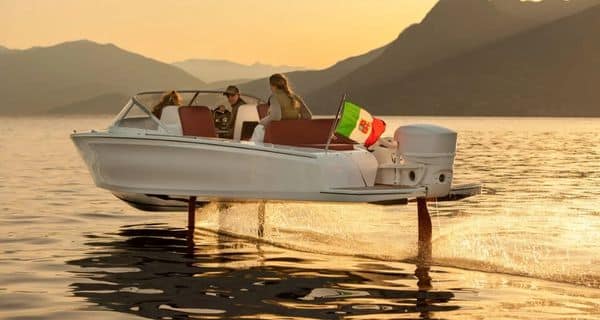
A hydrofoil boat is supported by a “hydrofoil” which is a structure composed of either a wing (V), T, or U shape. There are two types of hydrofoil boats: surface-piercing, and fully submerged. Both types of hydrofoils achieve the same purpose of lifting the boat off the surface of the water at high speeds.
When going fast enough, the lift of the foils is great enough to lift the entire hull of the boat out of the water, so that nothing but the foils themselves are touching the surface. This has some incredible benefits in terms of speed, efficiency, and experience – all of which we will soon go over.
Hydro foils help minimize drag and improve speed which is very similar to the effects achieved by aerofoils used on airplanes.
Hydrofoil boats are powered mainly in the same way other power boats are, by propellers or water jets. With that being said, they are also really popular in sailing. But the use of hydrofoils on sailboats is highly technical and primarily used by racing teams. They are most commonly used by commercial boats, and now are being introduced at the consumer level with pleasure boats.
History of the Hydrofoil Boat
The hydrofoil technology was first developed by inventors Casey Baldwin, Enrico Forlanini, and Alexander Graham Bell – yep, the same guy who invented the telephone. Forlanini had a prototype operating on Lake Maggiore in Italy by 1909. The hydrofoil boat achieved fame in WWII when it was used by both the German and US Navy to navigate waters that were heavily guarded by mines.
During the 1960s, 70s, and 80s, the hydrofoil technology was taken to water sports, where it was used in kiteboards, surfboards, and the air chair. It returned to the consumers’ attention in the 2010s, when it was used by racing teams across the world to set speed and time records in sailing championships. Most recently, watercraft companies have begun experimenting with the idea of hydrofoils on smaller scale boats outfitted with propelled and outboard engines.
How does a Hydrofoil Boat work?
So, we know that hydrofoils help boats achieve higher speeds with less drag, but how does that really work? The best way to think of it would be as “a boat with wings,” as that is essentially what they are. Just like an airplane would lift off the ground or water, as a hydrofoil boat gains speed, it lifts off the water too. While the foils themselves are submerged in the water still, much of the time there is enough lift to hold the entire hull of large ships and ferries off the surface. The sensation of being in a hydrofoil boat is much like being in an airplane that has limited flight. It’s smooth, and it’s really fast.
At the consumer level, hydrofoils require additional technology. As we’ll go over later on, this can result in some expensive price tags. As you can imagine, a boat that essentially “flies” through the air comes with some safety hazards. Hydrofoils require an automatic control system that maintains flying height, foil pitch, and smoothness of the ride. This “autopilot” system allows the foil to move in and out of the water safely, preventing the boat from slamming back into the water after it’s been lifted off the surface.
Hydrofoil Boat Advantages and Disadvantages
Their speed and unique ability to shed drag is undeniable, but are hydrofoils really all they are cracked up to be? In this regard, there are several advantages and disadvantages to consider.
Hydrofoil Advantages
- Speed: No surprise here. Most hydrofoils whether in the form of sailboat, ferry, or commercial vessel, can “fly” at speeds well over 50 knots (60 mph).
- Comfort: Because the hull of the boat is off the water, most waves and wakes hardly impact the boat, and therefore go largely unfelt by passengers. This makes for one smooth ride.
- Stabilization: For the same reason that comfort is increased, so is the boats stability (at high speeds that is). The hydrofoils cut through the water, decreasing the motion index of the watercraft.
- Efficiency: Since they aren’t impacted by smaller waves and wakes that would slow the progress of most boats, hydrofoils reach their destination in a much more efficient manner. For boats powered by traditional propeller or jet engines, this efficiency promotes a substantially better fuel economy.
- Experience: The reduced drag and impact from waves makes for a one-of-a-kind boating experience. It truly does feel like you are “flying” just above the surface of the water.
Hydrofoil Disadvantages
- Skill: Operation of a hydrofoil is a lot more technical, and requires a much more advanced skillset when compared to that of a standard runabout boat.
- Water Type: Hydrofoils are only suited for the open sea or large lakes (as of now). They are NOT fit for shallow water, as any bottom strikes while in motion could prove to be catastrophic for both the riders and the boat itself.
- Speed Range: Hydrofoils are built to “fly,” but only at certain speeds. Each boat will have a speed range where it likes to operate. Anything below that range will result in extra drag because the hull and the foils are submerged in the water. Anything above the range gets to be dangerous and uncontrollable.
- Maintenance Costs: The more complex technology comes with more complex maintenance and storage.
- Total Cost: They aren’t cheap. Some of the more popular boats at the consumer level cost upwards of $300,000.
While they may prove to be more complicated in terms of where you can drive them and their cost, there is an undeniable “coolness” factor with hydrofoil boats. As they gain popularity around the world, industry experts believe their cost and availability will become more and more accessible.
Hydrofoil Boat Costs
While you can find hydrofoils in nearly every style of boat, in this article we will cover the most common types of “personal” watercraft. You can find more information on commercial hydrofoils through this article by ScienceDirect.
- Price: $329,000
- Power Specs: 67 hp, 44 kWh battery, capable of cruising at 20-30 knots.
** One important sidenote to make about the C-8 is the incredible C-POD electric motor, which requires much less energy than a traditional internal combustion engine. The manufacturer promises 4,000 hours without any maintenance. That’s nearly 20 years of consistent use without maintenance!
- Price: $900,000 (base price)
- Power Specs: 740 hp supported by twin V8s, providing for cruise speeds upwards of 40 knots.
- Price: $240,000
- Power Specs: 40 hp, 40 kWh battery, capable of cruising at 22 knots
** For a more in-depth review, check out this Youtube video:
- Candela C-7 Review
The Future of Boating?
There are some undeniable advantages that hydrofoils have over general powerboats. The lift they get off the water not only makes for less drag and more speed, but also promotes a more comfortable and efficient ride. With that being said, their cost in manufacturing and maintenance has made them more costly than most people can afford.
It’s hard to say whether or not hydrofoils will be more commonplace at the consumer level. Right now, they are really just a fun toy for the wealthy. There are also some operational issues that manufacturers need to overcome before you’ll see them on your local waterway. Their susceptibility to damage in shallow water makes them unfit for anything but a large lake or open sea. Hydrofoils may not be as common as your run of the mill jet boat yet, but their popularity is growing at a rapid pace. If your local water happens to be a giant lake or open ocean, don’t be surprised if you start seeing more of them!
- Recent Posts
- What Is The Cheapest Way To Store A Boat? - February 28, 2023
- Do Boats Need Bottom Paint? (Uncovering the Truth) - February 2, 2023
- How Much Is Bass Boat Insurance? (Real Quotes) - January 18, 2023

Home » Blog » Sail » Hydrofoil boats for the rest of us
Hydrofoil boats for the rest of us
By Author Fiona McGlynn
Posted on Last updated: August 18, 2023
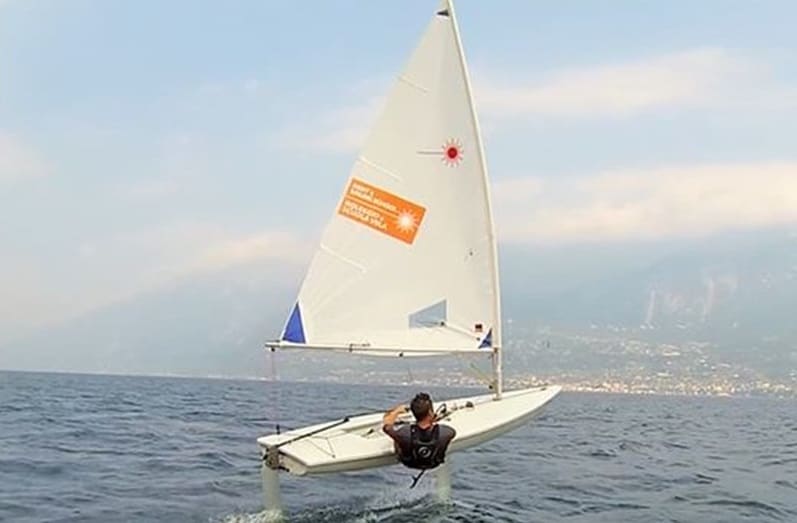
Glide Free Foils Laser on foils. Photo credit: sailboats.co.uk ,
Watching foiling boats fly around the America’s Cup race course, is enough to quicken any sailor’s pulse. But unless you’ve got a spare few million kicking around, most hydrofoil boats are still very much out of the average boater’s budget . There are however a few ways to experience the magic of foiling without racing towards bankruptcy.
HOW DOES HYDROFOILING WORK?
Much in the same way that air flows over and under aircraft wings to create lift, water flowing around a hydrofoil lifts a boat’s hull out of the water . Once the greater part of the boat’s surface area is out of the water, friction is greatly reduced and the boat can “fly” at faster speeds .
How fast? The 2021 America’s Cup AC75s are expected to reach top speeds of 40 to 50 knots!
Like sails, foils are not a matter of “set it and forget it”, instead the foil-attitude must be adjusted to keep the boat in flight . On the 2017 America’s Cup boats these adjustments were made by the skipper/helmsman but powered (via a hydraulic system) by crew grinding winches (or in New Zealand’s case, pedal bikes ).
Because we don’t all have Jimmy Spithill ‘s magic touch, developing highly sophisticated flight control systems is key to bringing foiling into mainstream boating. Candela, a new 25-foot production e-foiling powerboat (and 2019 Best of Boats award winner) offers such a solution with foils that change position 100 times per second! Still, at ~$240,000 it’s well beyond most boating budgets.
Fortunately, smaller foilers (dinghies and boards) don’t require high tech flight control systems and are far less expensive . Here are a few options for (more) affordable foiling:
HYDROFOIL DINGHIES
Laser foiling kits.
Clip a foil onto your Laser and fly over the surface of the water. Two Australian based companies, Foilsz and Glide Free Foils , offer Laser foiling kits. The Glide Free kit doesn’t require any permanent fixtures, so you can easily remove it (for those days when you’re in a displacement mode mood). They say that speeds of 18-25 knots are possible with their kit, which sells for just under $4,530 AUD (~$3,00 USD).
UFO foiling multihull
For a few bucks more you can buy a foiling catamaran. The UFO was launched in 2017 and can fly at 15-20 knots. With a price tag of $7,000, it may be the most economical multihull foiler on the market.
Take a foiling course
Some clubs and community sailing programs are adding foilers to their fleets. For example Nantucket Community Sailing offers a 3-hour semi-private class for $100 per person . Or if you’re looking for a more exotic locale, the Provela Foiling Centre in Spain offers a range of foiling classes from beginner to advanced. Their two-day “Try Fly – Foiling” class costs 200 euros and their fleet includes Foiling Moths, White Formula Whispers, WASPZs, and F101s.
HYDROFOIL KITEBOARDS
It’s not like kiteboards are sluggish to begin with, but hydrofoil boards take the sport to a whole new level, delivering speeds of 40 miles an hour ! By using a foil to lift their boards out of the water, foiling kiteboard enthusiasts get an exceptionally quiet and smooth ride – so much so, that kiteboard riders in Silicon Valley have been spotted taking calls on their cell phones. Set up costs start at around $1,000. Take a foil boarding course and buy protective gear, this extreme water sport is not for the faint of heart.
HYDROFOIL WINDSURF BOARDS
Foiling is taking off in the windsurfing world with world champions like Robby Naish and Atoine Albeau leading the charge. It has been confirmed that windfoiling will be a class at the 2024 Olympics in Paris . Set up costs start around $2,500.
With foiling technology trickling down into the mainstream, you can expect to see more and more high speed foiling boats and boards on the water . Is foiling the future? Let us know what you think in the comments below.
Fiona McGlynn is an award-winning boating writer who created Waterborne as a place to learn about living aboard and traveling the world by sailboat. She has written for boating magazines including BoatUS, SAIL, Cruising World, and Good Old Boat. She’s also a contributing editor at Good Old Boat and BoatUS Magazine. In 2017, Fiona and her husband completed a 3-year, 13,000-mile voyage from Vancouver to Mexico to Australia on their 35-foot sailboat.
Terms and Conditions - Privacy Policy
- 2024 BOAT BUYERS GUIDE
- Email Newsletters
- Boat of the Year
- 2024 Freshwater Boat and Gear Buyers Guide
- 2024 Boat Buyers Guide
- 2024 Water Sports Boat Buyers Guide
- 2023 Pontoon Boat Buyers Guide
- Cruising Boats
- Pontoon Boats
- Fishing Boats
- Personal Watercraft
- Water Sports
- Boat Walkthroughs
- What To Look For
- Watersports Favorites Spring 2022
- Boating Lab
- Boating Safety

Using a Hydrofoil to Improve Efficiency
- By Alan Jones
- Updated: July 15, 2021
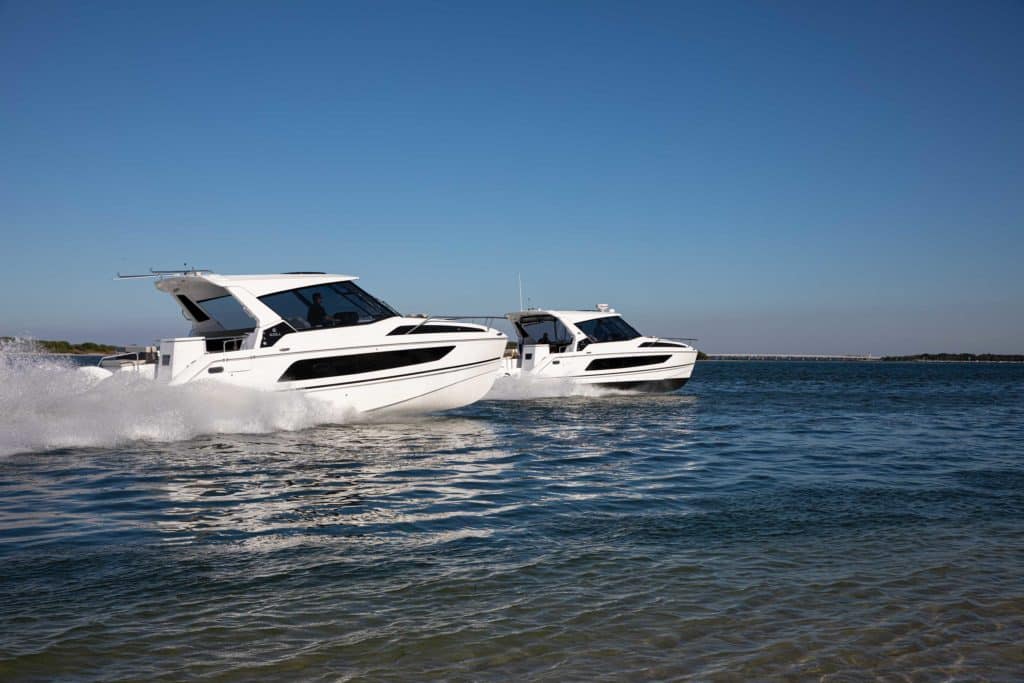
It’s hard to believe a piece of metal with no moving parts can be the approximate equivalent of adding 200 horsepower, 100 gallons of fuel and 100 miles of extra range. But when it’s a hydrofoil attached between the hulls of an Aquila 36 Sport power catamaran (above, far right), that’s the net effect.
While the efficacy of foiling boats is well-documented, this technology has surprisingly had little impact on the recreational powerboat market. Hydrofoils that lift a hull entirely out of the water seem to be too alien to most boaters. Plus, most foil designs require dynamic control using computers to remain aloft at a constant elevation. But they are proven to be effective. With the Aquila 36 Sport, we experienced its benefits on a recreational boat and compared it in real time to the same boat without a foil but with 200 extra ponies. Here’s what we found.
Hydro What?
Gino Morrelli and Pete Melvin, of Morrelli and Melvin Design and Engineering, applied their decades of foiling experience to design the Hydro Glide Foil System for Aquila. It consists of a main hydrofoil attached slightly aft amidships to each hull and the top of the tunnel. It lifts approximately 40 percent of the hull’s weight out of the water when at cruise speeds, for better performance and fuel economy. Farther back, twin fins act like an airplane’s horizontal stabilizers to prevent porpoising at higher speeds. What makes hydrofoils so effective is the dramatic reduction in drag. A typical planing hull has a 4-to-1 lift-to-drag ratio, while a hydrofoil can have up to a 25-to-1 lift advantage.
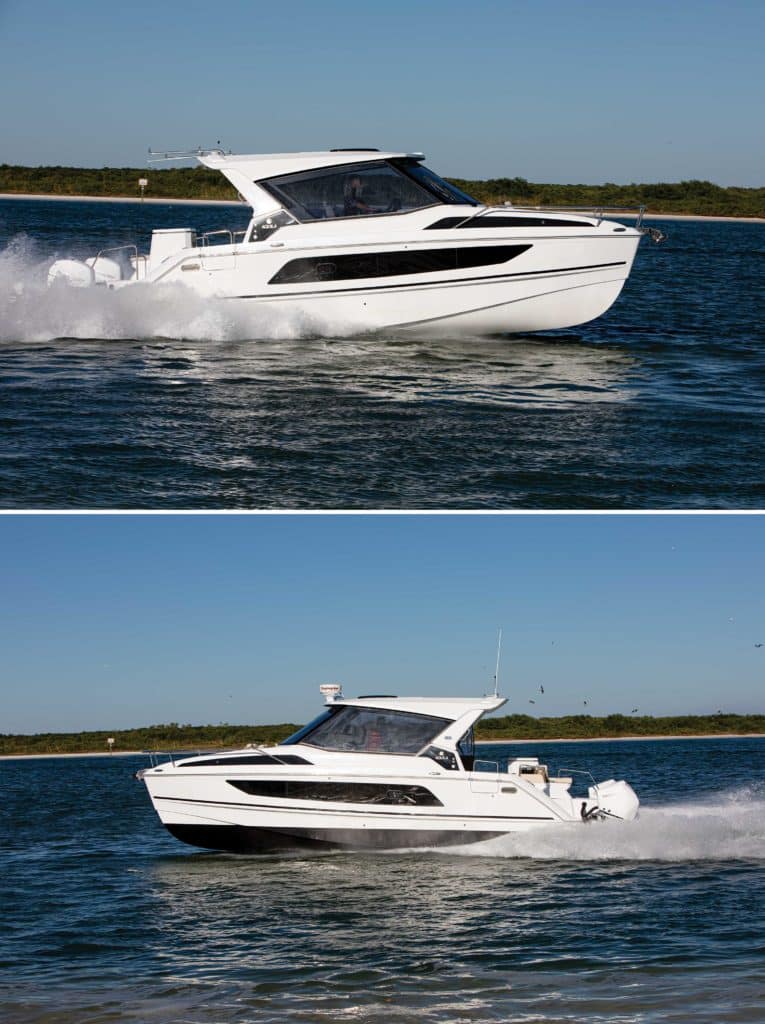
How does it work? The fields of aerodynamics and hydrodynamics are kissing cousins, so many of the principles of one apply to the other. The silhouette of a typical asymmetric hydrofoil wing wouldn’t look out of place on a 737. It consists of a convex curve on the upper side and a flatter bottom side. These taper down toward the rear. Bernoulli’s principle explains that when air or water rushes over the top side of a wing, the medium has to travel farther, so it moves faster. This creates lower pressure on top, allowing the higher pressure on the bottom to push upward.
Sir Isaac Newton’s third law also applies to hydrofoils. The simplified version says that for every action, there is an equal and opposite reaction. So, if a foil is directing the water down, it’s pushed back and the foil rises, creating lift. This effect is enhanced by an increased angle of attack at the leading edge to create more lift. In the case of Aquila’s Hydro Glide foil, it will still provide lift even if the boat’s bow is pointing down 3.5 degrees, which will be useful when running down-sea because it avoids transforming the hydrofoil into the equivalent of a down-planer or sea anchor.
Too much lift can also be a problem, according to Alain Raas, brand manager for Aquila Boats. “Because water is denser, a hydrofoil creates about 830 times more lift for the same area and speed compared to an airplane wing, so you can use a much smaller foil in water than air,” Raas says.
Most hydrofoils operate near the surface and can ventilate, which is a phenomenon that occurs when the low-pressure side of a foil pulls air from the surface and destroys lift on the foil, Raas explains. “Foil depth, sweep, dihedral and section shape all play a significant role in avoiding ventilation,” he adds.
Dueling Aquilas
We were able to arrange a test staging out of MarineMax in St. Pete Beach, Florida. MarineMax is Aquila’s exclusive distributor in the US. The Aquila brand is owned by the Sino Eagle Group, a high-tech Chinese builder that extensively uses vacuum-infusion technology to build the boats. J&J Design Group provided a complete design package for the Aquila 36 Sport.
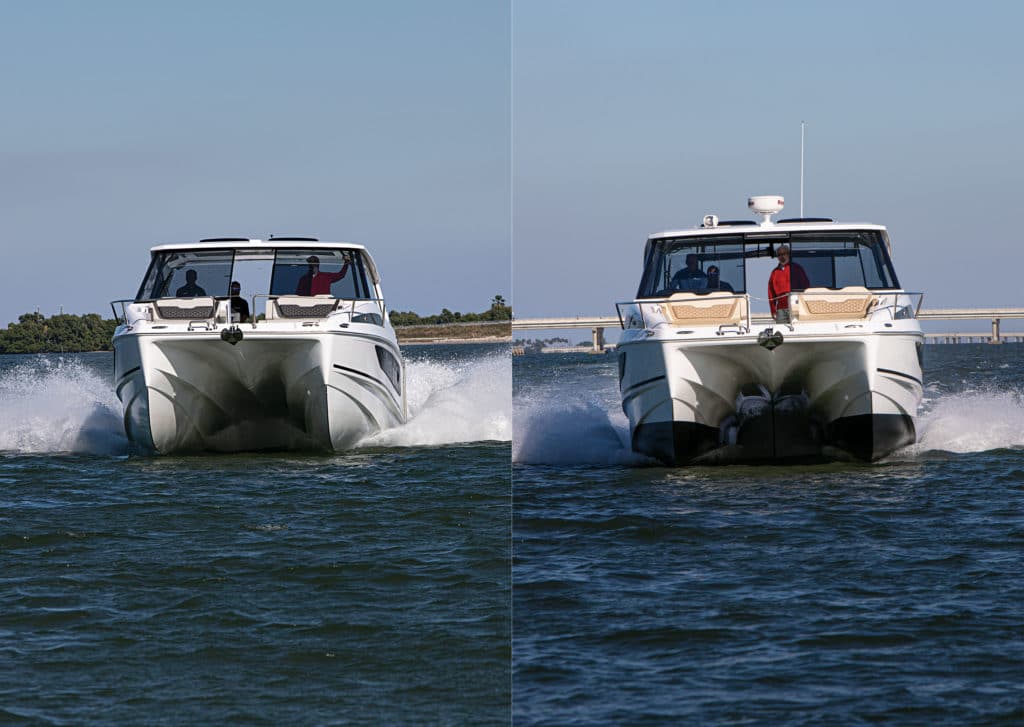
Aquila is largely the brainchild of Lex Raas, Alain’s father and president of Aquila at MarineMax. Lex is South African, and his career journey has taken him from working for Beneteau (the world’s largest boatbuilder) to the Moorings (the world’s largest vacation charter operation) to MarineMax (the world’s largest boat dealer). While a big believer in power catamarans for their roominess and comfort, Lex didn’t like that most were converted sailing vessels. The unveiling of the Aquila 36 Sport power catamaran in 2017, the company’s first outboard-powered model, ushered in a new era of high performance. Because these boats would be used on bareboat charters driven by skippers of varying degrees of expertise, they are purposely designed to be easy to pilot.
One Cool Cat
Our first sea trial began aboard the nonfoiled Aquila, joined by Alain Raas and Jacob Coyle, a MarineMax sales associate. When we headed out into the Gulf of Mexico through the Pass-a-Grille entrance, the wind was blowing 17 mph and gusting to 23 mph from the northwest, creating steep 4-foot waves. In other words, it was a glorious cat day.
Our nonfoiled test boat was powered by a pair of Mercury Verado 400 outboards derived from the Mercury Racing division. This engine does some serious overachieving given its smallish 2.6L inline-six-cylinder block, thanks to twin-scroll superchargers, which lend it substantial punch when a driver needs a blast of power. Ultra-rapid acceleration is less important for catamarans, which usually do best in rough water when kept at a steady speed that is faster than you would think.
Read Next: Aquila 36 Test
The big difference between most power cats and the 36-foot Aquila 36 Sport is the Aquila’s incredible 14-foot-7-inch beam, which creates a living room’s worth of space in the cockpit/salon for up to 26 passengers and is mostly enclosed by an optional hardtop. In addition to helping its optional Joystick Docking for Outboards system work more efficiently, this wide footprint creates an ultra-stable platform that will be reassuring to those without sea legs (or stomachs). It’s so stable, according to Alain, no customers have ever asked Aquila to install a Seakeeper gyrostabilizer.
Settling into a cruise speed of 33 mph felt like the cat’s happiest velocity for that sea state. The narrow profile of the twin hulls cleaved the water without the pounding that characterizes most monohulls when running into steep waves. We used a little bit of engine trim to bring the bow of the hulls out of the water to reduce drag and prevent bow steering, and the boat offered a smooth ride, even when we turned the beam to the waves. Narrower cats of similar lengths can snap-roll alarmingly in large beam seas, but the Aquila remained surprisingly level.
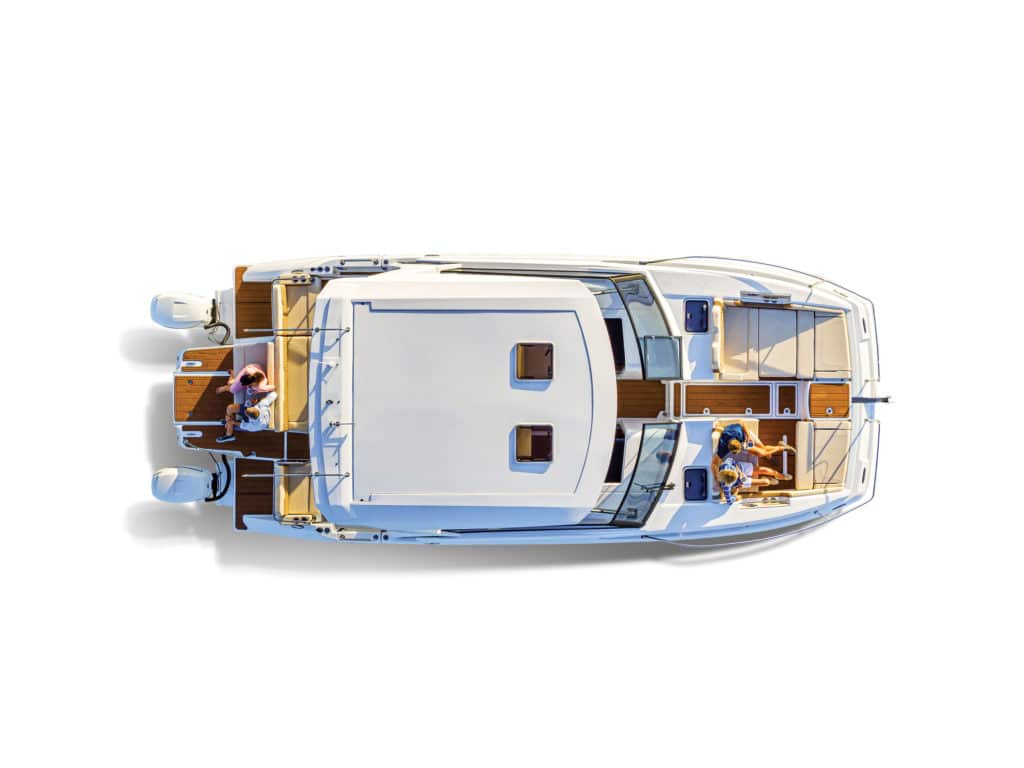
Heading into Bunces Pass is tricky because of shoaling on each side, but once through, it put us squarely into the Tampa Bay area’s recreational boating epicenter. With Egmont Key State Park and Fort De Soto Park to starboard and Shell Key Preserve to port, we were surrounded by great beaches that are perfect to nose up to. The Aquila 36 Sport Hydro Glide showed off its ability to float in just 2 feet of water with the engines trimmed up as we beached it. We beached the foil boat too. Even though the bottom of the foil is about a foot lower than the hulls, its extruded aluminum construction is stout enough to withstand being gently beached.
Time to Fly
Switching boats, we were curious to feel the difference the foil makes. The experience was subtle. The Hydro Glide foil is positioned just forward of the boat’s longitudinal center of gravity and set at zero degrees of attack, allowing the driver to use engine trim to increase the angle for optimal lift. On this boat, little trim is needed because the optimal angle of attack of the hydrofoil is only about 1.5 degrees, according to Lex. In our case, because the fuel tanks were almost full, we just trimmed the engines to their neutral position and let the weight of the fuel give the Aquila 36 Sport Hydro Glide its proper bow-up angle.
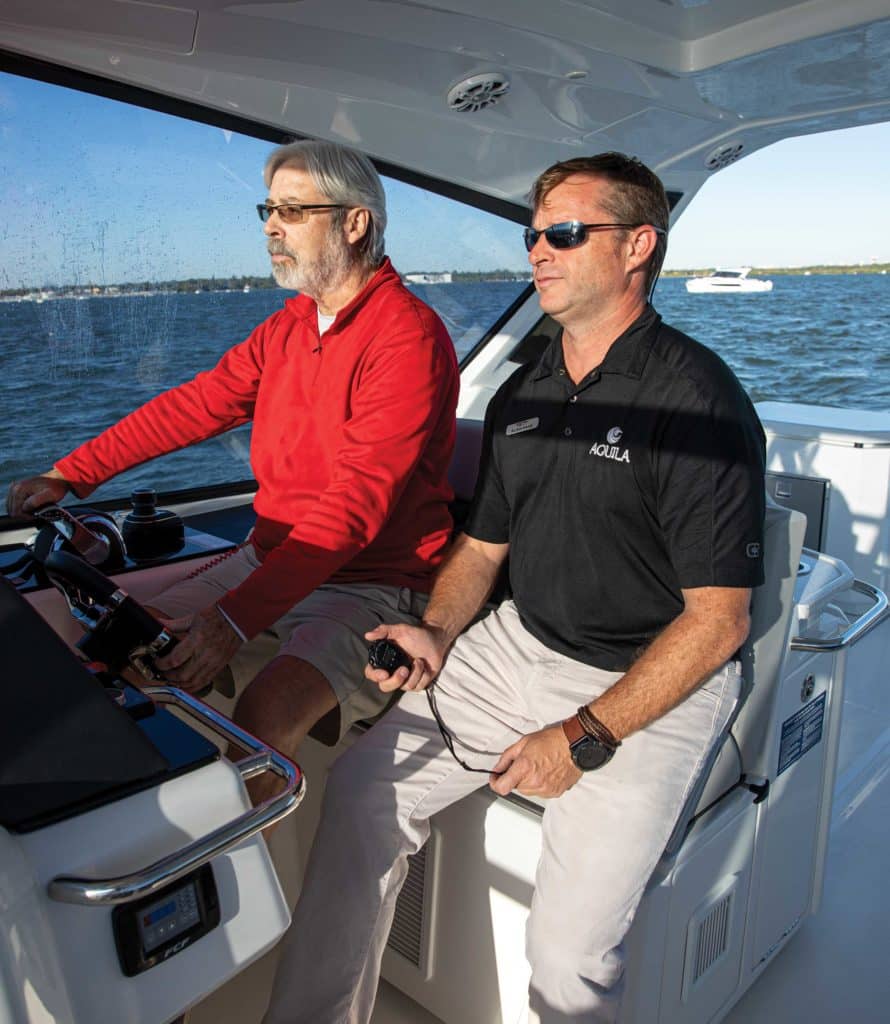
Because the Hydro Glide Foil System lifted the hull only about 6 inches, there was a general feeling of riding higher in the water, but the most tangible evidence was how the steering felt lighter and more responsive—an indication that the foil is running at its proper angle of attack. The wake behind us flattened out significantly, unlike the tall rooster tail and wake that shot aft from the nonfoiled boat. Offshore, it handled the steep chop well and felt best at a cruise speed of 38 mph. There was never a moment when it lost its lift from the foil.
Another difference lay in the cornering characteristics. Without the foil, the 36 Sport has a slight lean to the outside, which some find off-putting. With the Hydro Glide foil, the cat leaned slightly inward and felt nimbler as it carved hard turns. A driver can overcook it during extremely hard turns—the hulls can dig in and turn more sharply than expected—so whipping it into a corner like it’s a jet boat isn’t advised.
Foils that raise a boat’s hull entirely out of the water can plummet should the boat lose lift. But the dihedral V-shape of the Aquila’s foil allows it to descend a little at a time when exposed above the water. This results in gentle corrections in heave, or a boat’s up-and-down motion.
The Numbers Don’t Lie
The Aquila 36 Sport Hydro Glide reached plane in 6.4 seconds, which was 1.4 seconds faster than the nonfoiled boat. Its zero to 30 mph time was 2.4 seconds quicker, taking 12.4 seconds. While those might sound like modest gains, remember this test boat had twin 300 Mercury Verado engines—200 fewer horses than the nonfoiled boat. Of course, these 300s are the new-generation Mercury V-8 engines, featuring 4.6L in a naturally aspirated design instead of the 400′s 2.6L twin-supercharged powerplant. Having two more cylinders and 2 liters of increased displacement negates the need for supercharging because big blocks inherently have more low-end torque.
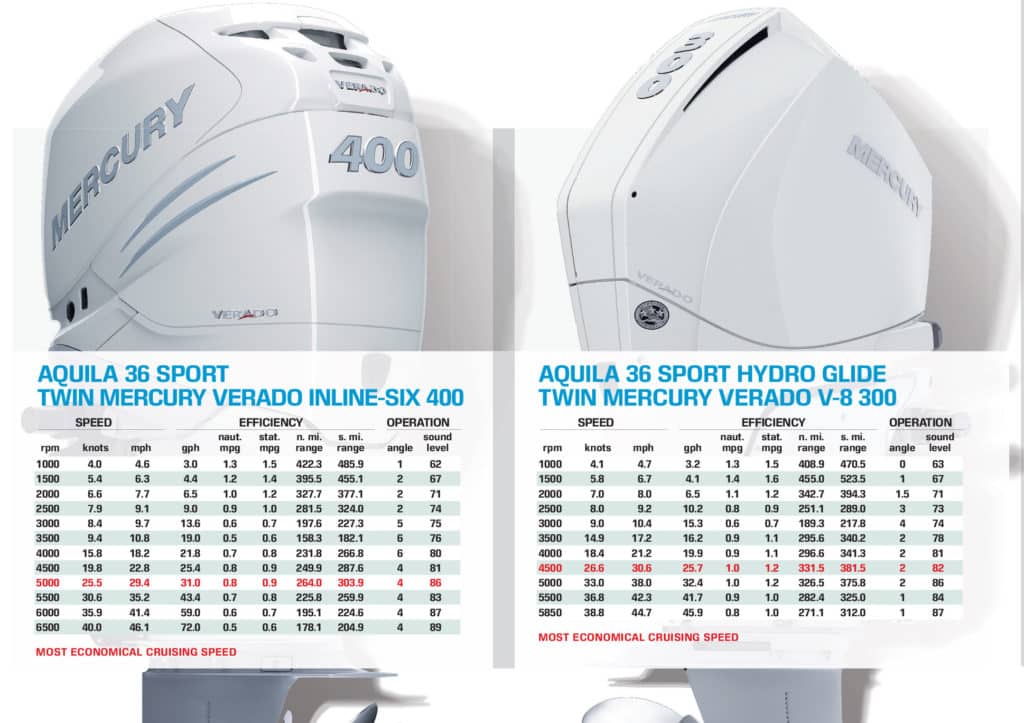
Most impressive was the lack of penalty for going fast on the 36 Sport Hydro Glide. Even at its top speed of 44.7 mph, it was still getting nearly 1 mpg, and the effect on its range was dramatic. At that speed with a full 356-gallon tank, we could theoretically travel the 322 miles from St. Pete Beach to Havana, though exceeding our 10 percent reserve. The nonfoiled Aquila 36 Sport, traveling at its top speed of 46.1 mph, would fall well short of reaching Key West (231 miles away) with a full tank. At its best cruise speed of 30.6 mph, the hydrofoil-equipped Aquila can go 381.5 miles, compared to the nonfoiled version’s 303.9-mile range, when traveling at 29.4 mph, factoring in a 10 percent reserve.
At first blush, opting for the Hydro Glide Foil System might cause sticker shock with its $32,452 price tag, which equates to running through about 13,000 gallons of fuel at $2.50 per gallon to recoup the investment. But if you factor in the difference in buying a pair of 300s versus 400s, the price is much closer, and you get a better-handling boat with more capability because of its increased range. Aquila 36 Sport owners will be happy to discover the Hydro Glide Foil System can be retroactively fitted at an estimated additional labor cost of $10,000. Twin 300s are the max power with the foil because higher speeds cause cavitation, which then adds drag. But the improvements in ride, acceleration and range make this the biggest no-brainer on the options list.
- More: Aquila , Boats , Cruising Boats , versus

Twin Vee Debuts New GFX2 Line of Power Catamarans

Sailfish Boats Debuts 232 CC

Catching a Swordfish on a PWC
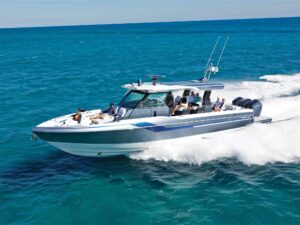
Boat Test: 2024 Formula 457 CCS

We Test: Savvy Navvy Mobile App

Urban Boating: Four Iconic Cities to Visit

Three Keys for Tow-Sports Safety
Celebrate 406 Day With the United States Coast Guard

- Digital Edition
- Customer Service
- Privacy Policy
- Cruising World
- Sailing World
- Salt Water Sportsman
- Sport Fishing
- Wakeboarding
Many products featured on this site were editorially chosen. Boating may receive financial compensation for products purchased through this site.
Copyright © 2024 Boating Firecrown . All rights reserved. Reproduction in whole or in part without permission is prohibited.
Home » Homebuilt Hydrofoil for Sailboats test sailed – end to hiking out?
Homebuilt Hydrofoil for Sailboats test sailed – end to hiking out?
Launching our Homebuilt Foil stabilised dinghy – this article is to use our experiment as the basis for low cost foiling that anyone can use to build or modify a boat – it sailed nicely in 5 to 10 knots and I didn’t have to do any hiking.
This is not about outright speed (wrong hull type for a start). It is about stability without hiking out. On the other hand if it works on this boat … it will work on anything!
No worthwhile video I am afraid – little wind when the photo boat was available on Sunday. We will get some next weekend with luck.
This is part of a four article set
- Part 1 – Sailing Trials in 5 to 10 knots of the hydrofoil stabilised dinghy.
- Part 2 – Building a Hydrofoil Stabilised dinghy – and proposal for comparison using any hull. Up later today
- Part 3 – Video in more wind – Next weekend if there is wind!
- Part 4 – Three Homebuilt hydrofoiling Projects – democratising foiling! Up Next week
Myth busting Foiling Boats – you don’t need a factory and you don’t need carbon fibre.
Everyone knew this once – because the recent history of making foiling work was achieved with homemade foils using timber and fibreglass.
The great Myth about foiling boats is “that it is high tech and everything has to be carbon”. But all the significant development in the Moth Class was with wooden hydrofoils that were fibreglassed with only small amounts of carbon or stainless steel.
The specification itself is to provide a basis for cheap experimentation and comparisons of performance.
The Foiling Moths advanced so quickly because there was a specification and people messed around with the spec and shared information. Wood and glass make fast modifications to homebuilt hydrofoils easier (and cheaper)
Maybe even racing if anyone has a mind to. But also as the basis of comparison with boats in other areas.
What does it feel like – a homemade foil stabilised boat upwind
We had good luck for the first day of testing – 5 to 10 knots and a well sailed Oz Goose as a pace boat. Started to get a feeling of the speed potential.
This section is about that.
Second day when we had a chase boat with cameras – of course the wind died. Hopefully we will have video next weekend.
The lateral foil to leeward needs to be kept in the water in the lulls. In 5 to 10 knots this meant sitting a little to leeward.
Initially as gusts hit I would follow instinct and make the wrong move. Hiking out brings the foil would to near the surface, would ventilate (suck air from the surface) and then the boat heel and slow.
Well … it is obvious … sit to leeward in the lulls, when the gust comes let the foil do the work – don’t move out to windward.
No Hiking. But with the same sail they were hiking in the accompanying Oz Goose .
So what to do when a boat with a lateral foil heels?
Don’t move your butt! Ease the sail and point a fraction lower to get the boatspeed up. The lateral foil starts to rise because of more lift – fly it up again.
Then I could wind in the sheet again to increase the heeling force. It is a feeling like flying. Boat heels then get speed without increasing the heeling force. Wind drops, move your body a little to leeward. Sheet loads seem higher – greater stability than hiking?
It becomes quite mesmerising watching the foil a foot or two below the water surface.
As the foil produces lift there is a depression in the surface of the water above the foil – which turns into a series of waves that make up the foil wake stretching back. It it like being followed by a small Loch Ness Monster.
It does also show that the homemade hydrofoil is developing lift at low speed.
The photo is at a very low windspeed/boatspeed. These wavelets go quite a way back. On Saturday with more wind and boatspeed I thought the transom was digging in and making a commotion.
But, it was the combination of the hull’s sternwave and the foil’s wake making a noisy quarter wave on the leeward side
So this is the exciting thing – not pure speed but less physical effort
At the moment many foiling systems are more or less being retrofitted to conventional boats.
Many of those boats are very wide – like the IMOCA 60s or some of the supermaxis.
Interestingly it is more moderate beam boats that win most races. They are faster in light winds, faster upwind and can sail deeper angles downwind without losing speed. A bit easier to steer too.
The question is … if we gain stability from a lateral hydrofoil – what is the beam for?
Canoes are light, fast and easy to store and transport. But can be hard to hold upright. PERHAPS this is a good place to start.
Another aspect is that modest length boats for disabled sailors have limited stability (and speed) because the centre of gravity of the crew is so high.
I also think about what will happen when I can’t hike out so hard. That’s why I win Oz Goose races. But I can certainly feel it in my 60 year old bones. The day is not close, but it is coming.
The inspiration of the Quant 28 and 17
Normally a keelboat this size without a canting keel would need 5 to 7 people on the rail.
Same lateral foil but a more beautiful version by Hugh Welbourne for Quant Boats in Switzerland.
The lateral foil is the simplest possible lifting foil.
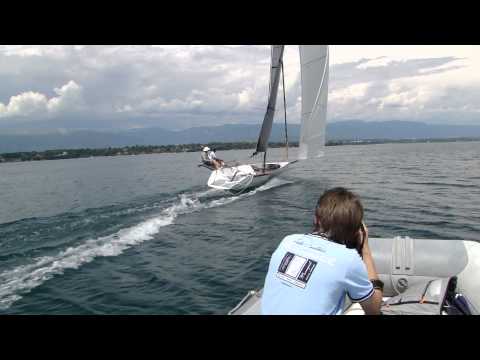
In terms of stability – see how the crew on the Quant 17 go from full trapezing and hiking to sitting inside the boat when the foils are deployed and to leeward as soon as the boat has any downwind component.
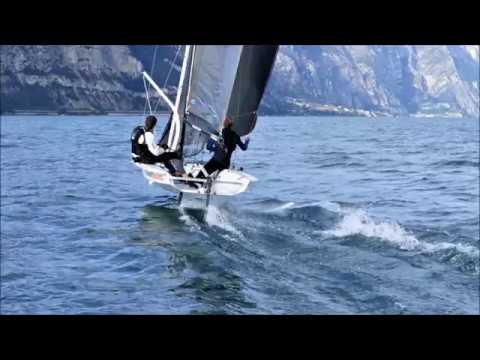
I’m interested in the stability component.
In homebuilt hydrofoil boats Ian Henehan’s modified Oz Goose saw him chuck the hiking wings and start sitting inboard too.

It was like this with a hiking rack before – no longer needed. Simplification and less effort.
Perhaps: an advantage of some rocker for foiling dinghies
We didn’t fit a rudder foil at this stage – even though we built the rudder extension.
The purpose of a rudder foil on all foilers is to hold the main foil at an optimum angle of attack. Usually the rudder foil is adjustable in some way to allow the adjustment of the angle of the main foil.
If the rudder foil is sent lower then the angle of attack of the main foil is increased.
But with the 8ft boat with the extreme rocker it was possible to move back to increase the angle of incidence of the main foil. The base angle is 2 degrees Angle of Attack relative to the static waterline of the boat.
In the gusts of around 10 knots, going upwind, it was possible to move forward or back to reduce or increase lift – speed changes from doing so were instant. So where you sit in/on a rockered boat is a critical tuning factor.
Less rocker might be OK, but some rocker is going to be important. Maybe concentrated in the back end of the boat. I’m not sure if the foil fitted IMOCAs do this with water ballast.
Overview of comparison sailing the hydrofoiled boat against the larger Oz Goose
This is not necessarily a question of speed, though it is nice to get.
Our 8ft boat is absolutely sub optimal as a foil stabilised boat.
- It is short, so potential hull speed is low – 8ft long. This limits foil lift (square of velocity).
- It has a lot of rocker (fore and aft hull curve)
- Crew weight is a very large part compared to the boat volume – it was meant to be a prototype kid’s boat but the curved cockpit was too hard to build. So we repurposed it.
Saturday it was sailing around in company with Job and Jazmine in a Goose who I compete against in that class. They are among the top sailors in the Oz Goose so I know the speeds they hit. And the new boat has an Oz Goose Rig but is only 8ft to the Oz Goose’s 12ft length.
In the lighter patches it was noticeably slower than the Goose, but it was still sailing properly (felt normal/good). It was a faster choice to retract the foil. Pushed out to windward the hydrofoil is above the water to reduce the wetted surface.
With a bit more wind and foil deployed it started to equal the goose upwind. This is not something the shorter boat should be able to do.
The biggest difference – no hiking. While Job and Jazmine were hiking in the Oz Goose I found it best to move to keep the foil in the water in the lulls – which meant I was sitting centrally or to leeward and not hiking in the gusts. It is low effort sailing.
Downwind differences – was the 8ft foiled boat able to stick with the 12ft Oz Goose?
Downwind the Goose should have walked away from the smaller boat. I’ve a lot of experience with the 8ft Oz Racer and a GPS and know the boat tops out at around 4.2knots or just about 5. It can go quite a bit faster (up to 8knots) but it takes a lot of wind and it drops back to the 4 to 5kn range as soon as the gust drops slightly. The Goose, however just loves to accelerate into the 6 7 or 8 knot range and on stronger wind days gets up in the 8 to 12 knot range. And beyond.
So the Goose should get away from the shorter boat.
It did … but not too dramatically. More comparative trials to come.
Now we hope there is more wind next Saturday when we have the photographer and a chase boat.
Foiling Week 2018 Pt 2 – Foiling Sail for the rest of us!
Our recent articles on homemade foiling and
2 thoughts on “homebuilt hydrofoil for sailboats test sailed – end to hiking out”.
We just post an abstract of your pages about foils in our web site. Thanks for your job. Best regards Danilus
Merci Daniel!
Can you provide a link here to the article on your website.
Also we hope to get more wind to show how the foil behaves. We had one day of moderate wind but no photo/video boat. But last three weekends have had very light wind – sub 5kn. A more active video when Poseidon grants our wish.
Best wishes Michael
Leave a Comment Cancel reply
This site uses Akismet to reduce spam. Learn how your comment data is processed .

IMAGES
VIDEO
COMMENTS
A hydrofoil yacht is a sailboat equipped with wing-like foils that lift the hull out of the water as it gains speed. This lifting action reduces the wetted area of the hull, minimizing drag and allowing the yacht to achieve higher speeds. Hydrofoil yachts can be retrofitted on both monohull and multihull sailboats, with different types of foils ...
10. New Zealand 'R' Class skiff. In New Zealand they love their skiff sailing, and development classes like the doublehanded 'R' Class are prime for new features. The 'R' Class started its project to get the fleet foiling back in 2008 and now there are a clutch of boats racing.
Hydrofoil sailboats blend speed, stability, and innovation for a fun sailing experience. Their design lifts the hull above water, reducing drag and enabling high-speed travel. Advanced control mechanisms maintain stability in varying wind conditions. Sails and hulls are meticulously engineered for optimal aerodynamics and lift.
A sailing hydrofoil, hydrofoil sailboat, or hydrosail is a sailboat with wing-like foils mounted under the hull. As the craft increases its speed the hydrofoils lift the hull up and out of the water, greatly reducing wetted area, resulting in decreased drag and increased speed. A sailing hydrofoil can achieve speeds exceeding double and in some ...
With razor-sharp hydrofoil catamarans that help them hit speeds of 60 miles an hour, the athletes of SailGP are pushing the limits of physics and human endur...
The Flying Phantom catamaran seems to levitate above the water as it hydrofoils. "It's like removing the handbrake - suddenly everything gets smoother and faster in pure silence.". This ...
In 1906, his 1-ton 60 hp foiler reached 42.5 mph. Alexander Graham Bell's HD-4 Hydrodrome flew on Bras d' Or Lake at 70 mph in 1919. And several sailing foiler patents began appearing in the 1950s. Notably, JG Baker's 26-foot monohull, Monitor, flew at 30-plus mph in 1955. Baker experimented with a number of foil configurations, and at ...
At A Glance. Price As Sailed: $24,750. Design Purpose: Learn to foil, advance skills. Crew List: One or two. Rob Andrews and his business partner Alan Hillman have been teaching foiling for a ...
The future for sailing hydrofoils is surely about more than just racing. At least, that was the view of one owner who, having witnessed the America's Cup foiling catamarans, saw a big opportunity.
One of the world's first sailing hydrofoils, Monitor was created in 1955 by Gordon Baker,… North Atlantic in six days solo: Arkea Ultim Challenge leaders cross the Equator January 13, 2024
Then friction only acts on the small foils, not on the whole hull, which is why a 130-foot hydrofoiling sailboat can "fly" at over 50 knots. Powerboats have added friction from the propulsion system that has to remain in the water, but even then, large hydrofoiling ferries can exceed 45 knots. Speed is not the only advantage that hydrofoils ...
The flight control system, combined with numerous fine-tuned innovations, ensures safe foiling even in strong winds and rough seas.. Stable flight attitude allows pushing hard, so in good conditions, iFLY reaches high boat speed beyond 30 knots in a controllable way. IFLY15 offers freedom to fly alone or in pairs.
The history of foiling. The early development of hydrofoils started over 100 years ago when Italian Enrico Forlanini achieved 36.9 knots with his 60hp airscrew-driven boat in 1906. Several ...
World's Fastest High Performance Luxury Hydrofoil Sailing Yacht. Nemesis Yachts is creating a completely new 'breed' of sailing superyachts, catering to high performance enthusiasts, who don't want to compromise on cruising comfort. We're the only multihull yacht builder, to offer a level of performance, previously reserved exclusively for striped out racing yachts. Combining: Ultra ...
The Working Principle Of Hydrofoil Boats. A "hydrofoil" is a structure made of a wing (V), T, or U form that supports a hydrofoil boat. Surface-piercing and fully submerged hydrofoil boats are the two different varieties. The boat is raised off the water's surface at high speeds using both varieties of hydrofoils.
Candela C-8. Swedish firm Candela burst onto the scene in 2021 with its debut, the Candela C-7, which was billed as the world's first electric foiling boat, but it was the 2022 launch of the Candela C-8 that really moved the game on. Available with a 69kWh battery, adapted from the Polestar 2 electric car, owners can expect a range of 57nm at ...
A hydrofoil boat is supported by a "hydrofoil" which is a structure composed of either a wing (V), T, or U shape. There are two types of hydrofoil boats: surface-piercing, and fully submerged. Both types of hydrofoils achieve the same purpose of lifting the boat off the surface of the water at high speeds. When going fast enough, the lift ...
HYDROFOIL KITEBOARDS. It's not like kiteboards are sluggish to begin with, but hydrofoil boards take the sport to a whole new level, delivering speeds of 40 miles an hour!By using a foil to lift their boards out of the water, foiling kiteboard enthusiasts get an exceptionally quiet and smooth ride - so much so, that kiteboard riders in Silicon Valley have been spotted taking calls on their ...
The Hydro Glide foil is positioned just forward of the boat's longitudinal center of gravity and set at zero degrees of attack, allowing the driver to use engine trim to increase the angle for optimal lift. On this boat, little trim is needed because the optimal angle of attack of the hydrofoil is only about 1.5 degrees, according to Lex.
Usually the rudder foil is adjustable in some way to allow the adjustment of the angle of the main foil. If the rudder foil is sent lower then the angle of attack of the main foil is increased. But with the 8ft boat with the extreme rocker it was possible to move back to increase the angle of incidence of the main foil.
Join boats.com and Marilyn DeMartini in Cape Canaveral Florida along with Tarpon River Boatworks CEO Todd Meyer for a full walkthrough video tour and review ...